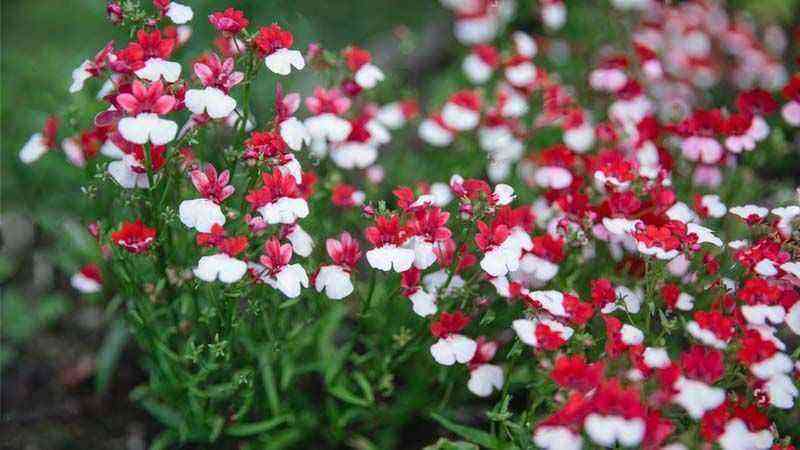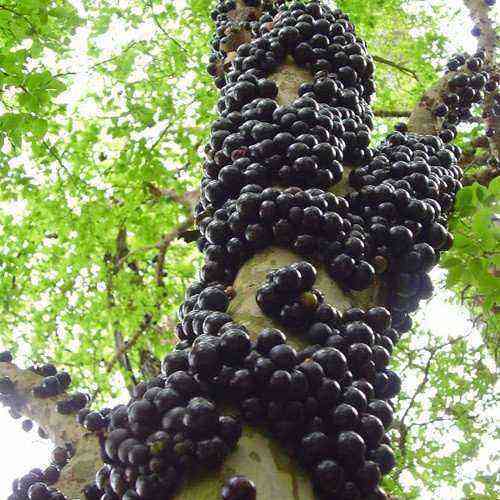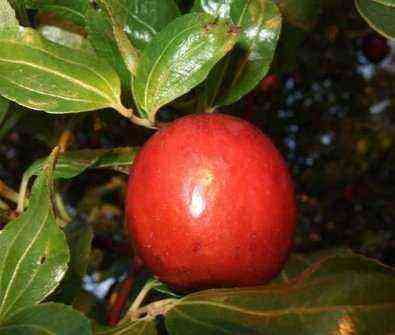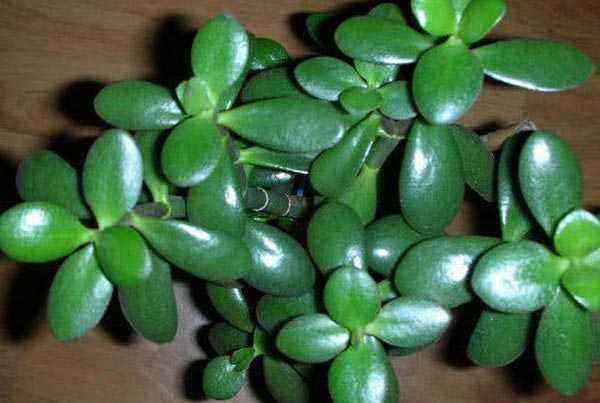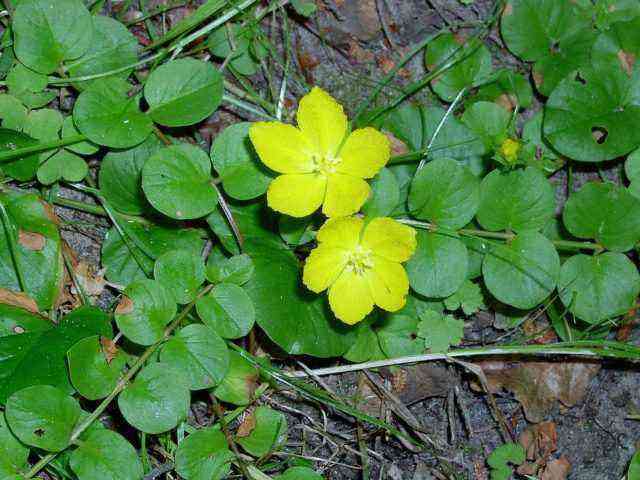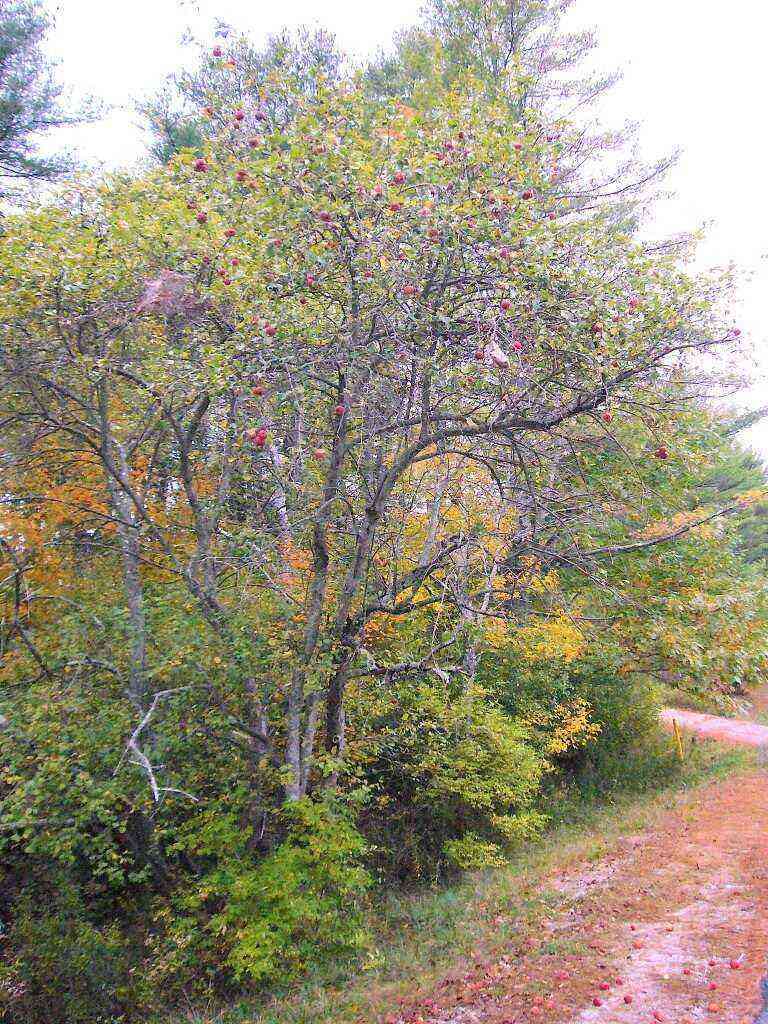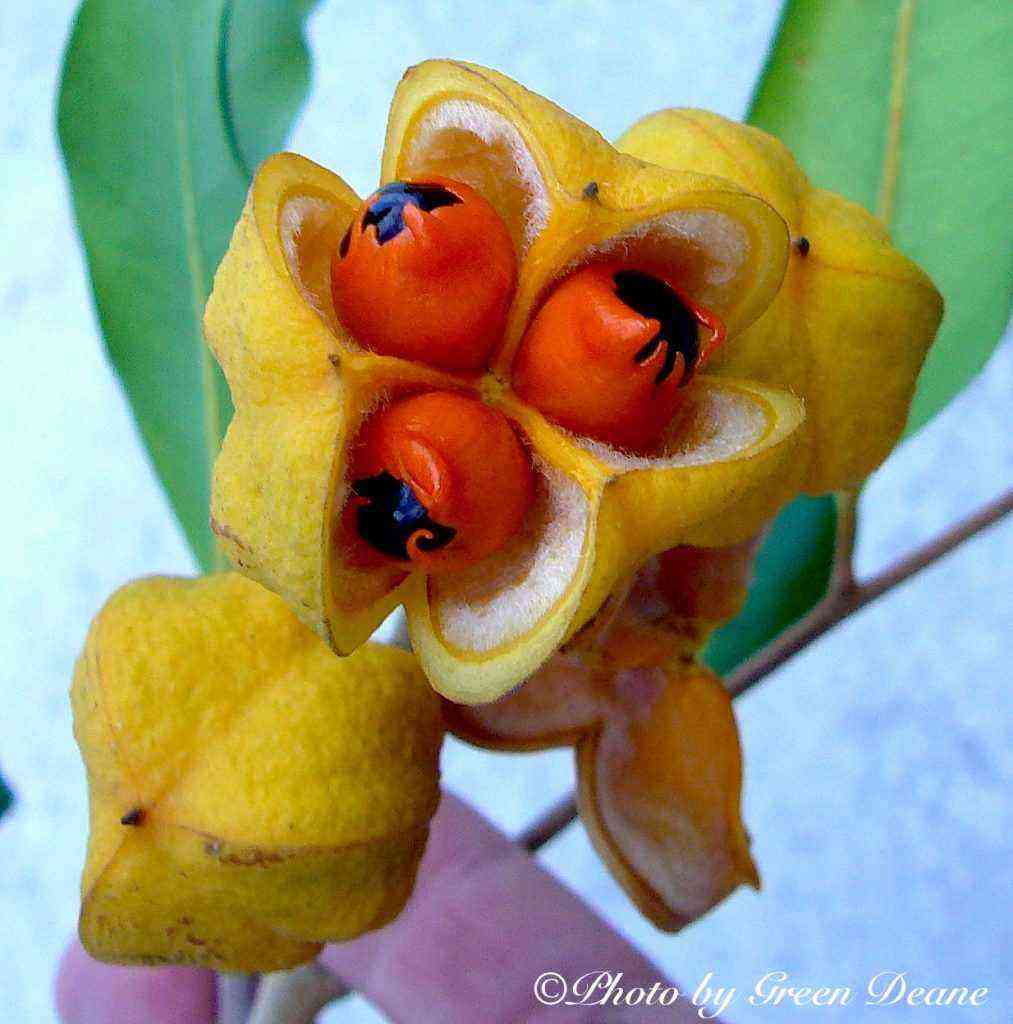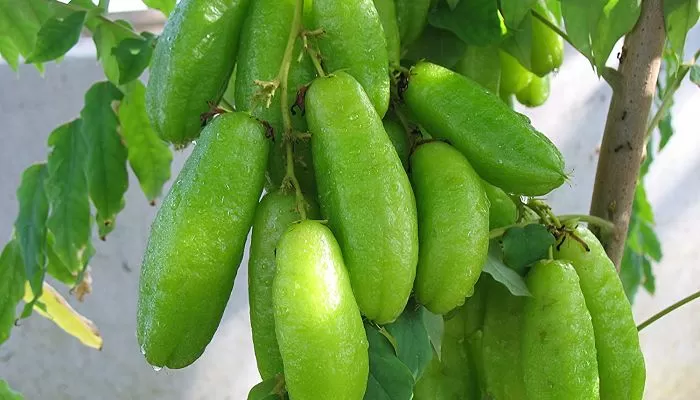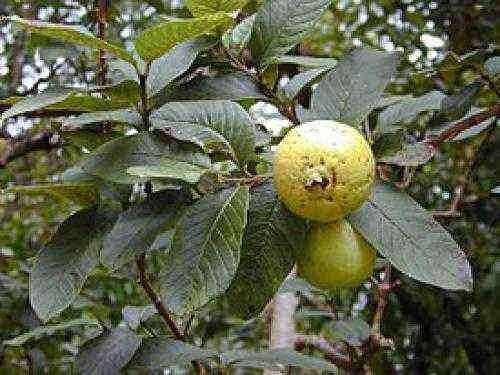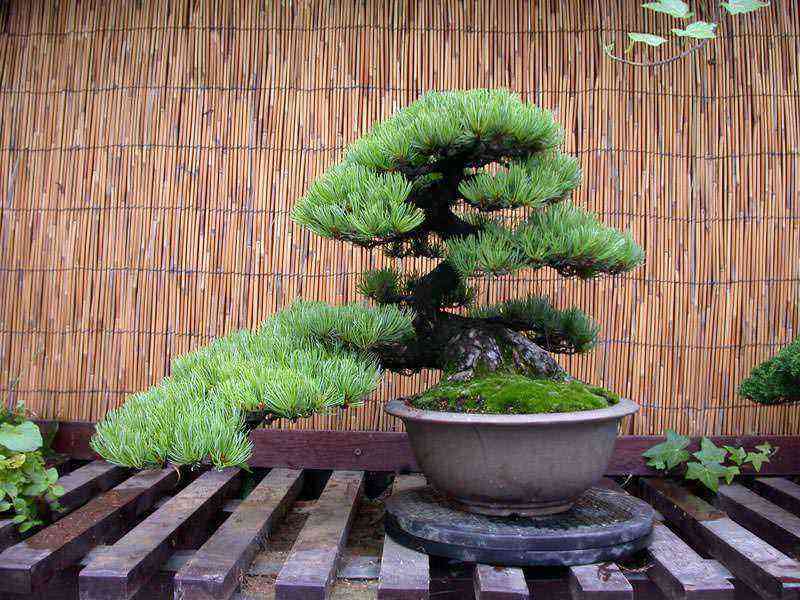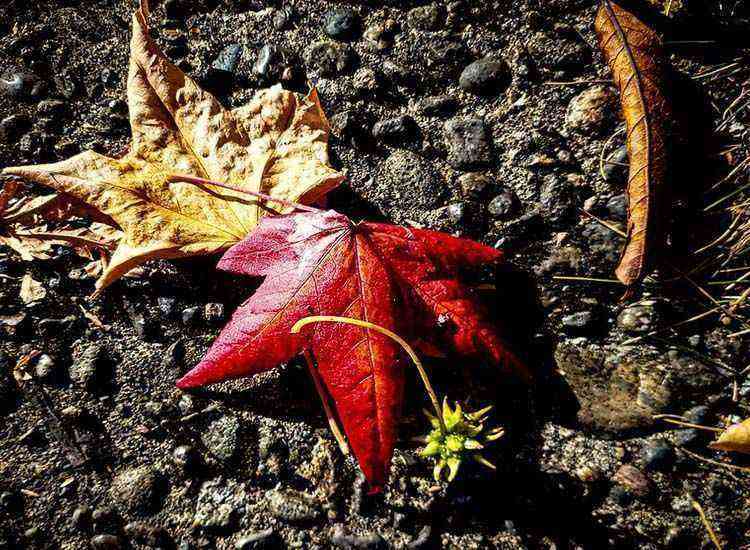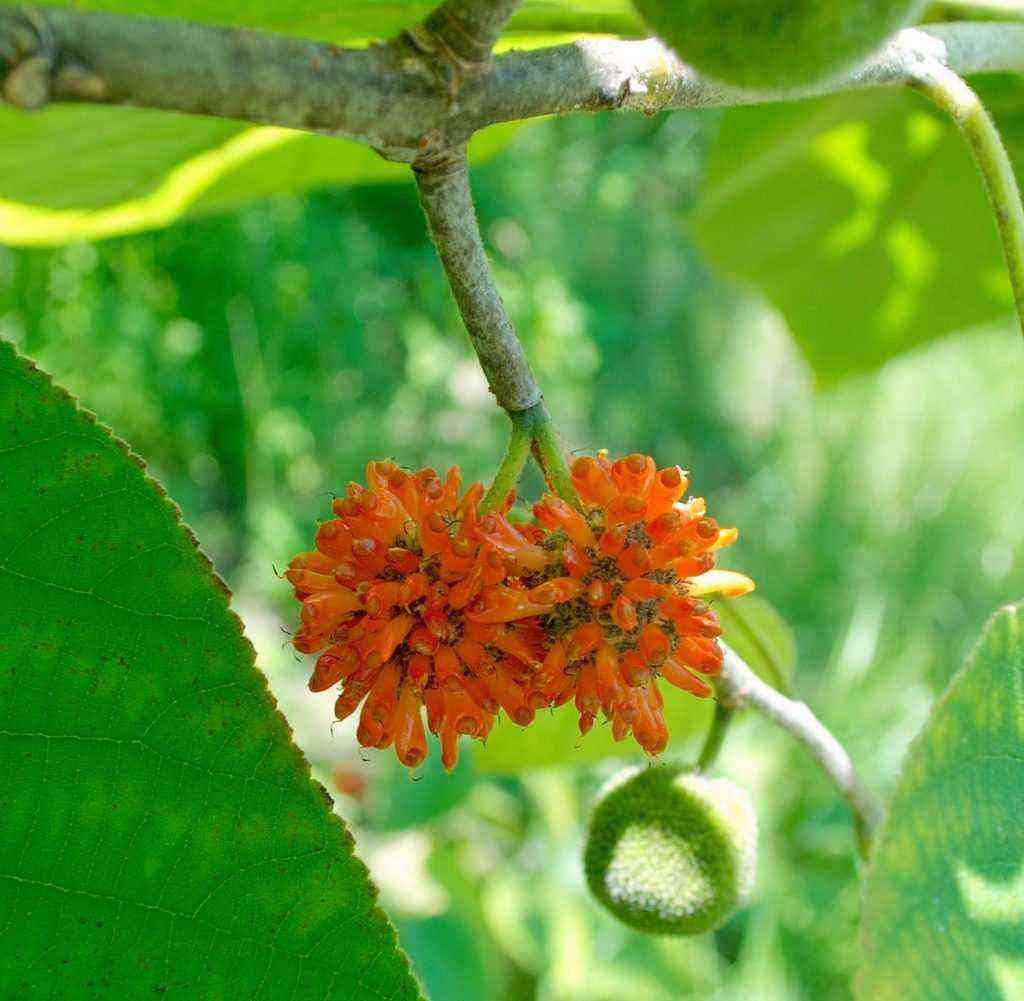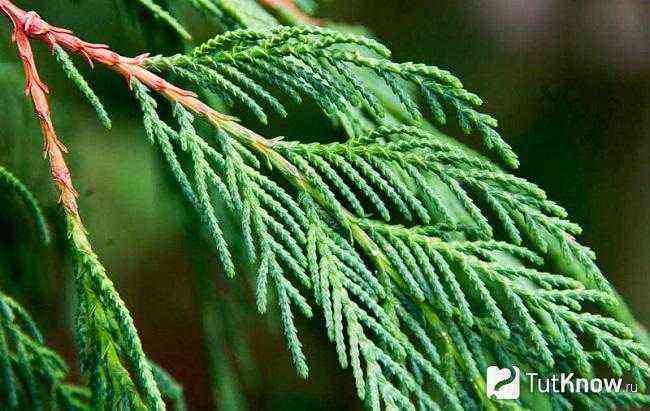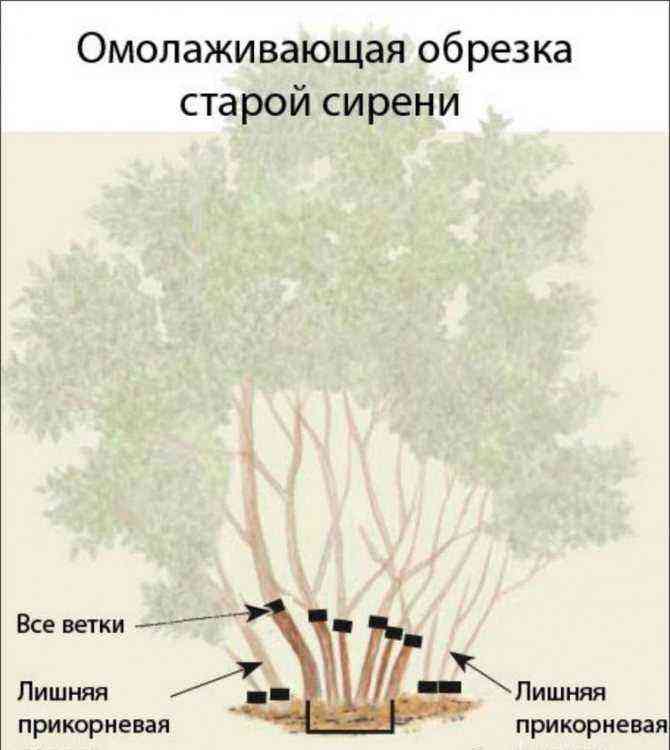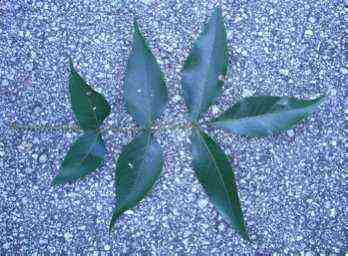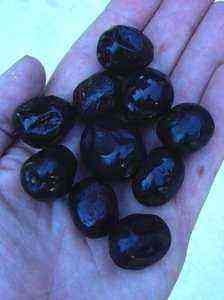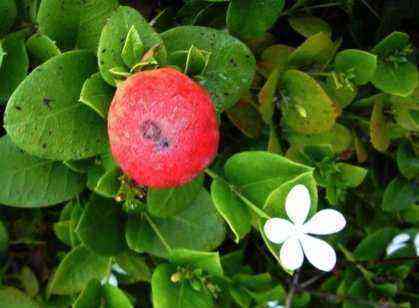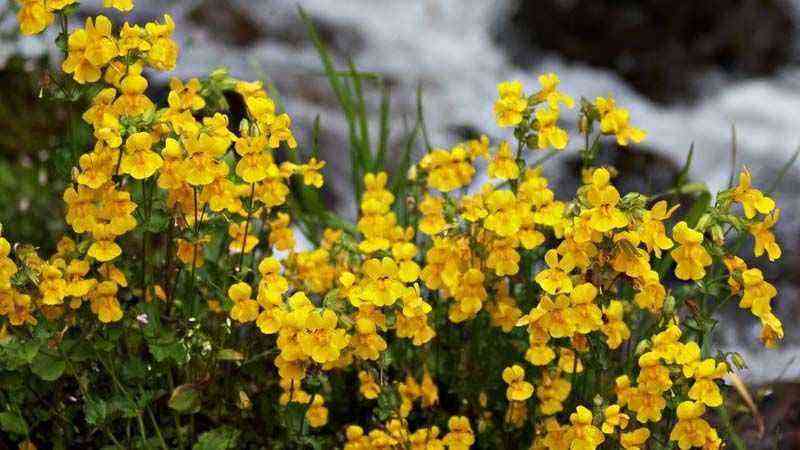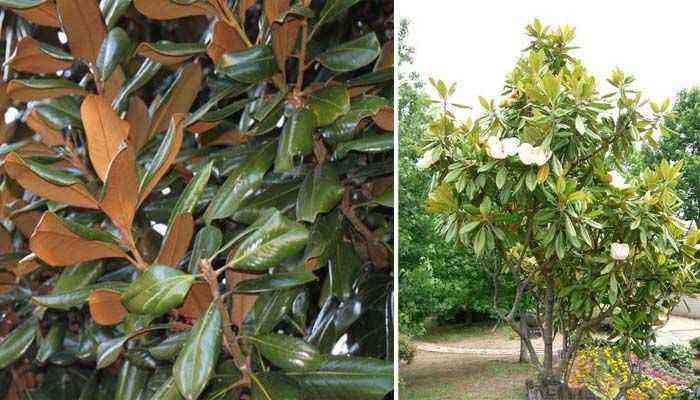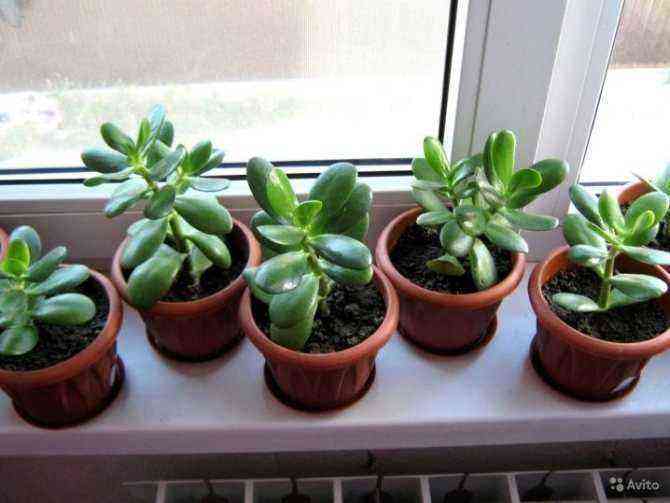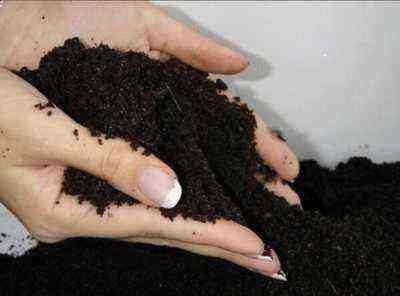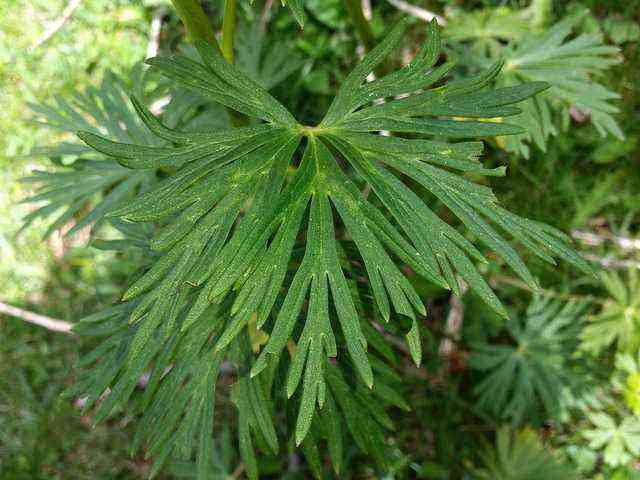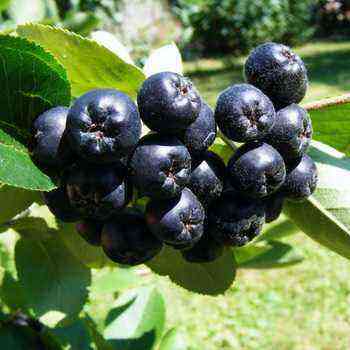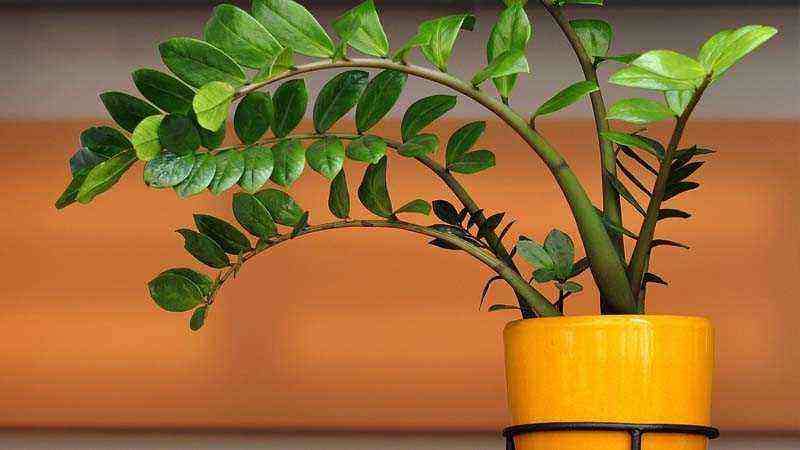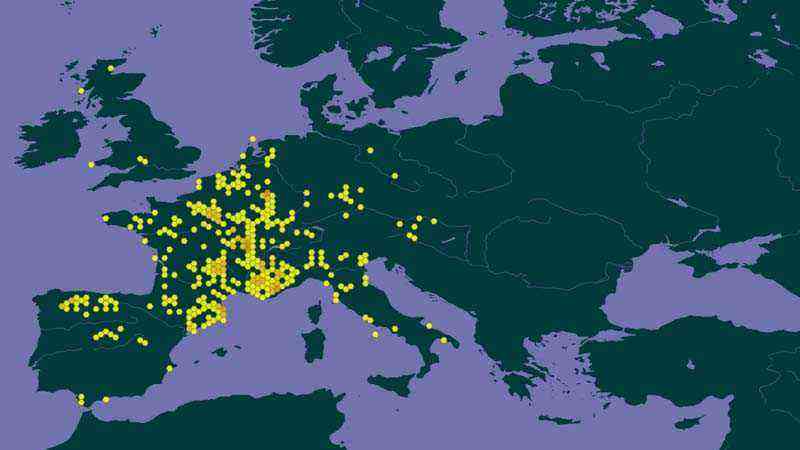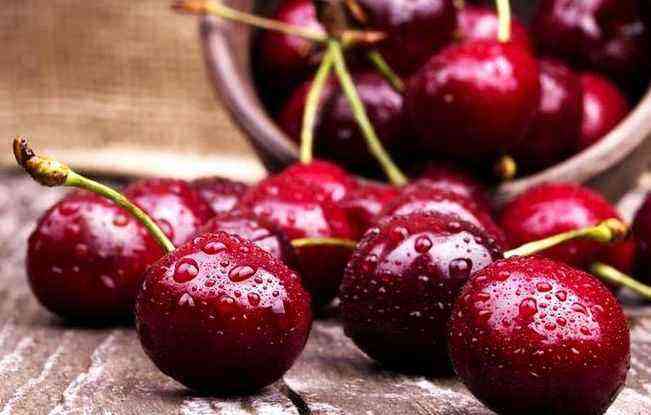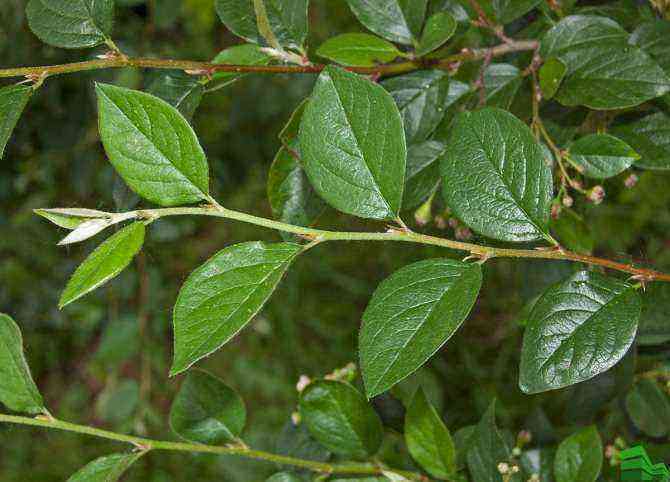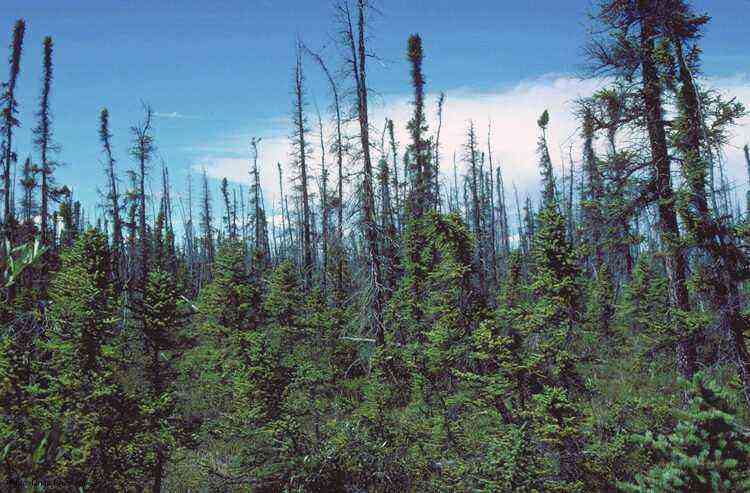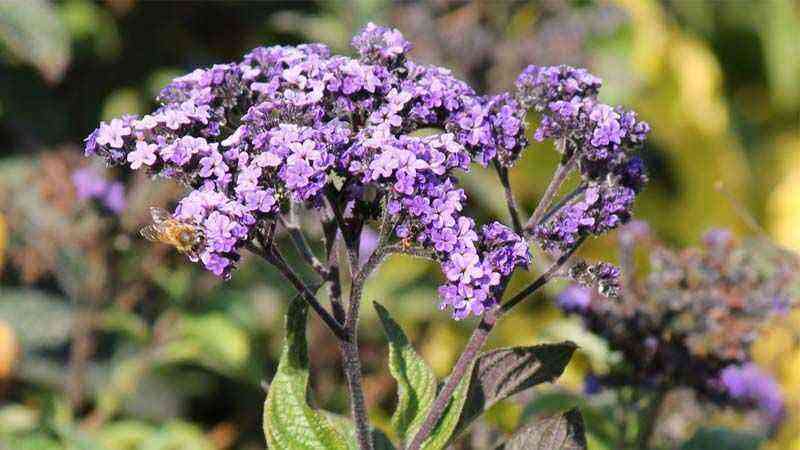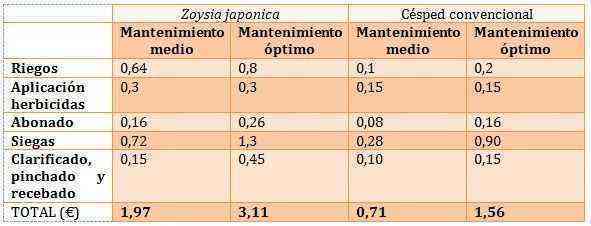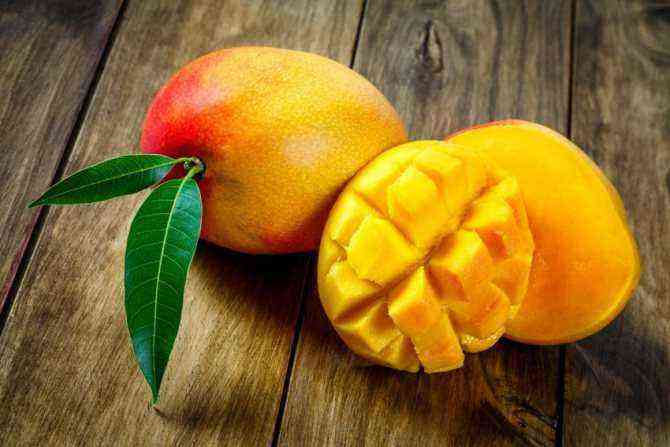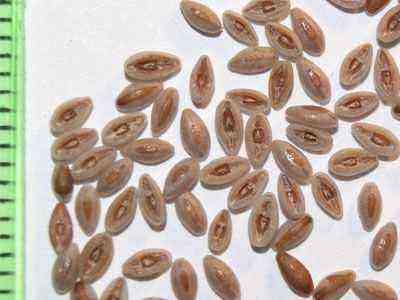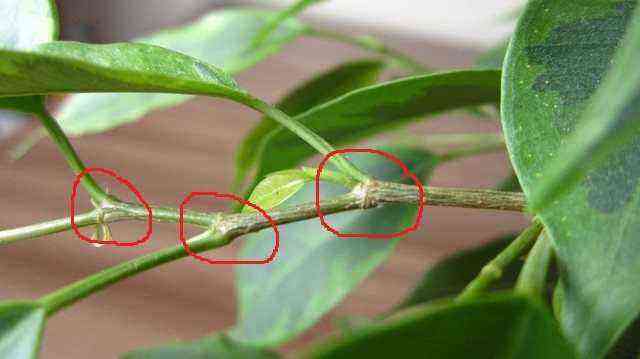Juniper Cossack – description
In the Cypress family, there are more than seven dozen species of junipers, including the Cossack juniper, whose Latin name sounds like juniperus sabina. This is an evergreen coniferous creeping shrub, less often dwarf tree-like forms, with a trunk height of no more than 4 m, are found. In the wild, the plant is common in Asia, the Caucasus, the Urals and Siberia, in some areas of southern and central Europe. Many specimens are hundreds of years old, and the oldest is about 2000 years old.
Juniper Cossack can grow both in forests and groves of the steppe zone, and on rocky mountain slopes, sand dunes. Plants are found up to 2,5 km above sea level. A feature is that the shrub reproduces both by seeds and vegetatively, therefore it very quickly forms dense juniper thickets. This variety of botany is also referred to as frost-resistant and light-loving plants that are able to withstand short-term drought.
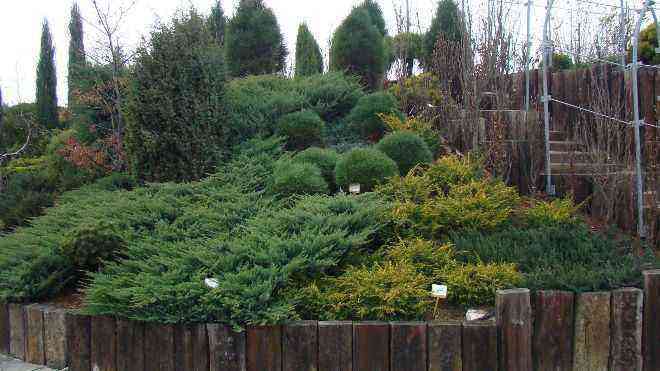

What does a Cossack juniper look like?
The shrub is easy to distinguish from other members of the Cypress family in appearance:
- An evergreen shrub, the height of which rarely exceeds 1,5 m. Sometimes a small tree with a slanting trunk is found.
- The crown is cupped, and the branches can be creeping or ascending.
- On dense thin shoots, the Cossack juniper has scaly needles, pointed towards the end. It is easily distinguished by its dark green hue and intense unpleasant odor due to the high content of poisonous essential oils in the shoots.
- The berries of the Cossack juniper have a rounded-oval shape and are called cones. Their diameter does not exceed 7 mm, and their brown-black peel is covered with a bluish bloom.
- Each berry can contain from 2 to 4 seeds, which ripen in the fall or spring of the next year.
How fast does Cossack juniper grow?
In the wild, the Cossack juniper has an impressive size due to its ability to root side shoots and create a kind of thickets. In household plots, when choosing the right place for planting and proper care, the annual growth will be no more than 10 cm.In the shade, this figure will be even lower, so pruning the plant should be done with extreme caution, because in case of mistake, the Cossack juniper bush will acquire its former decorative effect in a few years …
Reproduction of juniper


How to propagate a juniper
Actually, juniper seedlings are sold everywhere, so there is no need to propagate it amateurishly. But if you are interested in how to propagate a juniper on your own, then you should know that bush and woody forms propagate by seeds and green cuttings, and creeping junipers – by layering.
Seeds

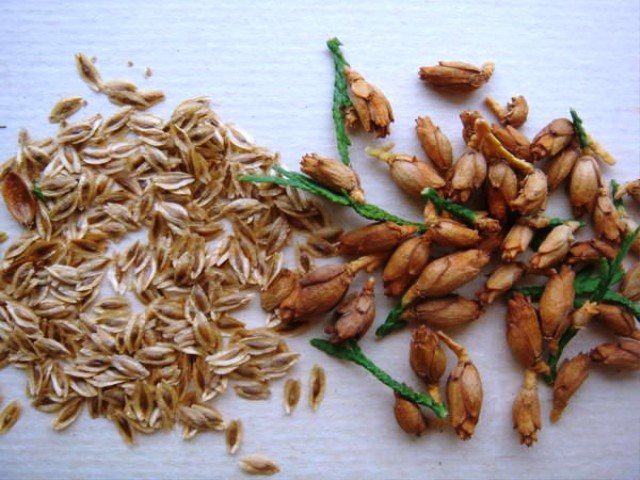
To grow a juniper from seed, the seed must first be stratified, that is, subjected to cold treatment. For this, the seeds are sown in boxes with soil, taken out into the garden and stored under the snow for four to five months. In May, stratified seeds are sown in the beds. You can, of course, sow seeds in the beds in May without prior stratification, but in this case they will only sprout next year. The seeds of some types of juniper have a very dense shell, therefore, before planting, they are scarified – they accelerate germination by acid or damage the seed shell mechanically. The easiest way is to rub the seeds between two sandpaper lined boards. After scarification, the seeds are buried in the ground to a depth of 2-3 cm. It is simple to take care of the crops: mulch the garden bed, water it as needed, cover the seedlings from sunlight for the first two weeks, loosen and weed the garden bed. When the seedlings are 3 years old, they, along with a lump of earth, are transplanted to a permanent place.
Cuttings
It is impossible to obtain decorative forms of juniper from seeds, therefore they are propagated vegetatively. Cuttings for rooting are cut in the spring from lignified young shoots. The length of the cuttings is 5-7 cm, each must have 1-2 internodes, and the most important condition is that there must be a heel on the cutting, that is, you must not cut off the shoot from the branch, but tear it off with a guy so that a piece of bark from the mother’s bark remains at the end branches.
The planting material is immediately treated with a root formation stimulator, planted according to the 7×7 scheme in a mixture of sand, humus or peat in equal parts, sprinkled on top with a layer of coarse sand 3-4 cm thick and cover each stalk with a glass jar. The planting depth of the cutting is 1,5-2 cm, that is, in fact, the cutting is rooted in a layer of sand. By the fall, the cuttings have roots, but they need to be grown for another two years before the time comes to plant them in a permanent place.
Reproduction of juniper by layering
Creeping junipers can be propagated by layering throughout the growing season. Well-rooted young, barely ripe twigs are used as layering. Before fixing the layering, the soil around the bush is loosened, mixed with river sand and loose peat and moistened. The layers are cleaned of needles up to a height of 20 cm from the base, the cleaned part is pressed to the ground and fixed with pins. Within a year or even half a year, the cuttings take root, if you remember to water and huddle it.
When young shoots appear on the cut, they are separated and transplanted to a permanent place.
Juniper Cossack – varieties
In city parks and in personal plots, you can find several of the most popular plant varieties:
- Arcadia
… A dwarf variety with a bush height of no more than 30-40 cm and a diameter of about 1,5 m. The needles are painted bright green. Unpretentious in care and frost-resistant. - Glauca
… A variety, recognizable by its blue-green needles, which take on a reddish hue in winter. The height of an adult bush is about 1 m, and the diameter reaches 2-2,5 m. - Variegata
… An excellent long-growing decorative variety with two-colored needles of green and white-cream shades. The dimensions of an adult bush are similar to the Glauka variety: the height is about 1 m, and the width is about 2-2,5 m. - Rockers Jem
… A low-growing variety, about 50 cm tall. The diameter of an adult bush can exceed 3 m. It is distinguished by exceptional winter hardiness and slow annual growth. Young needles are colored green, while older ones are blue-green. - Juniper Cossack Tamaristsifolia
does not exceed 30 cm in height, but branches grow about 2 m in width. The variety has several varieties of needle colors. It is often used for landscaping parks and urban spaces.
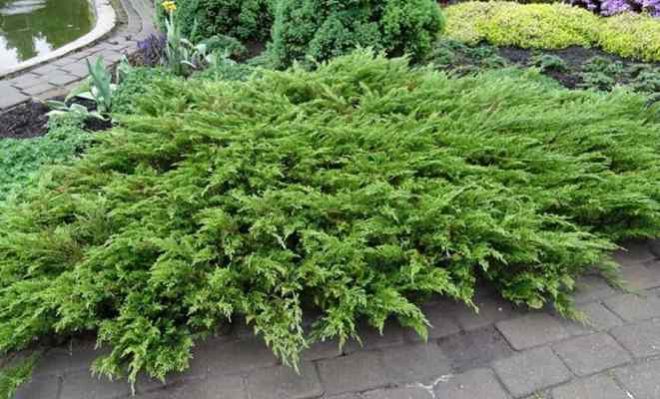
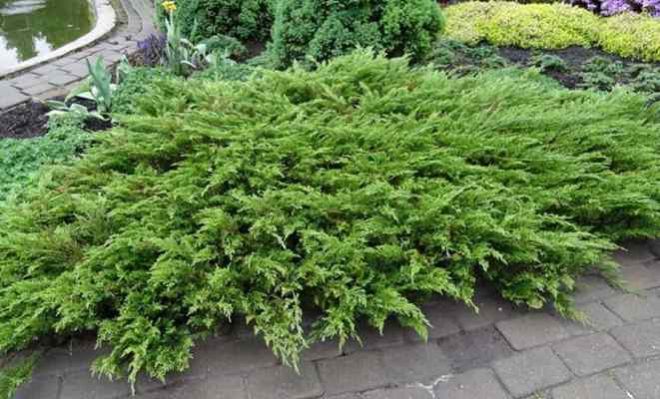

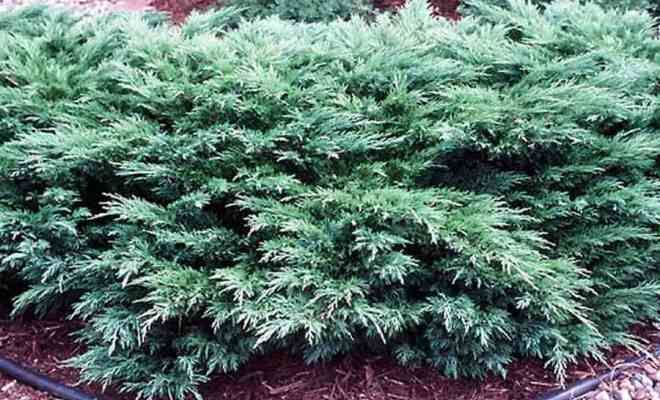
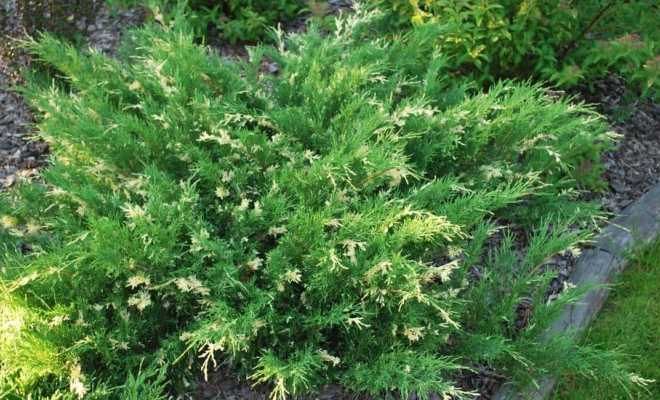
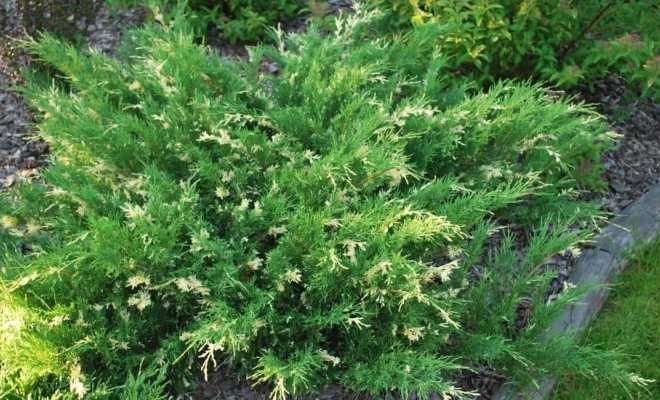
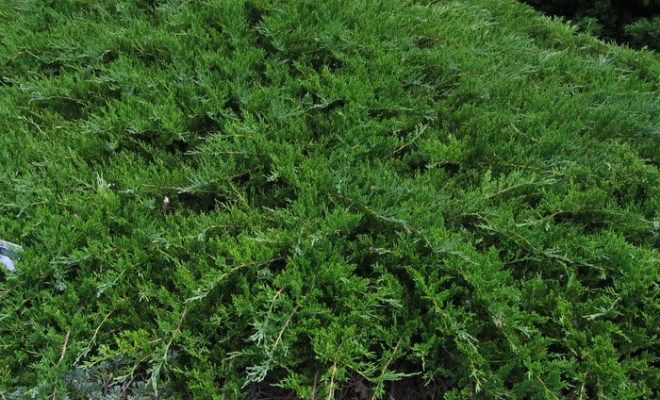
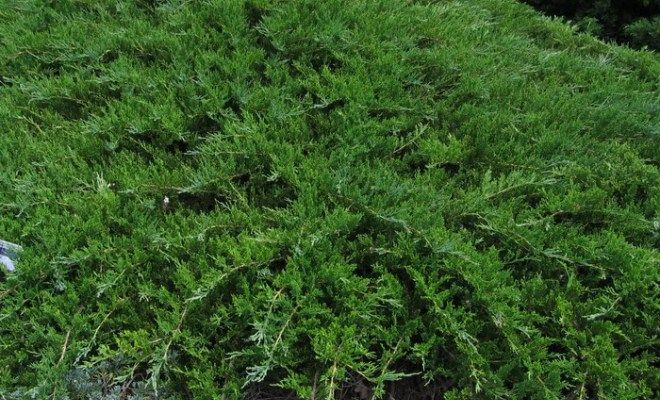
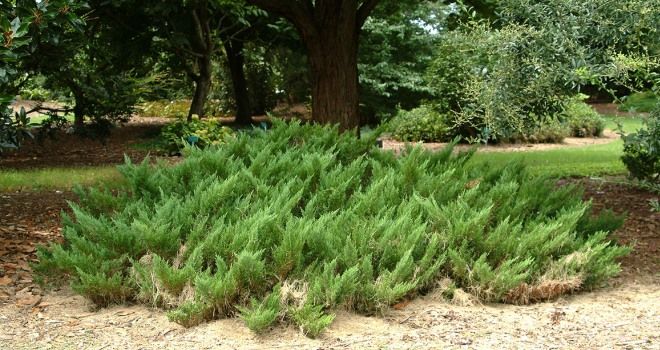
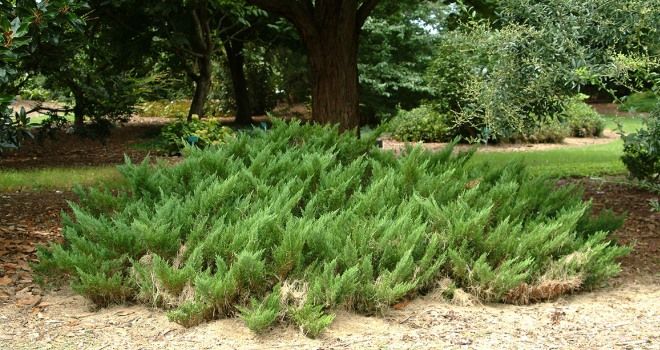
Types and varieties of juniper
Juniper is a plant that has over 10 varieties.
Types of juniper
Cossack
Cossack is a juniper growing in width. The plant grows on the slopes of the Crimean, Caucasian and Mongolian mountains. Differs in increased winter hardiness, wind and drought resistance. Thanks to its deep root system, it is able to grow in sandy and chalky soils. It goes well with other conifers.
Ordinary
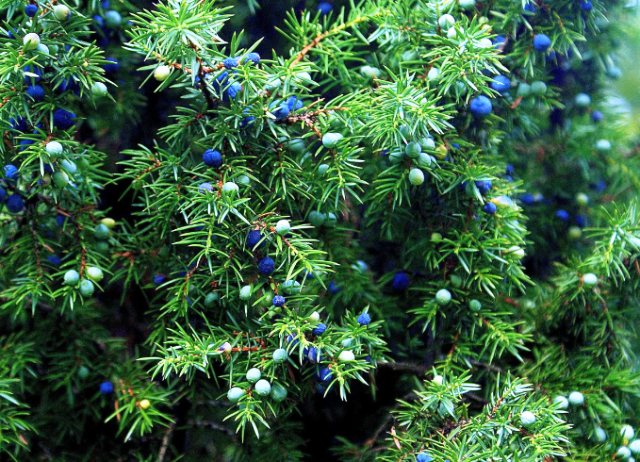
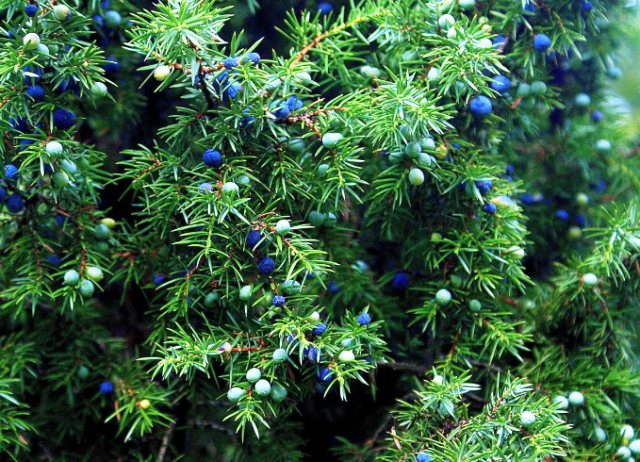
Common juniper is a monoecious or dioecious plant up to 4 meters high. The fibrous bark is distinguished by a grayish-brown color. The needles are prickly, whorled. Juniper is common in the forest zone of Eurasia and the United States. The plant is not demanding on the soil, but it develops best in nutrient substances.
Scaly
A shrub with dense branches, which grows mainly in Asian countries. The life cycle of a plant is 600 years. Differs in low frost resistance. During sudden temperature changes, the branches freeze over, the needles become brown and fall off. Prefers to grow on drained substrates.
Rocky


Rocky is a skyrocket plant. The variety is characterized by fast growth and slender shape. The crown is asymmetrical, the leaves are scaly. It grows for 10 years and grows up to 5 m in height. Young plants prefer partial shade, while adult specimens grow in sunny areas.
Chinese


Chinese is a monoecious or dioecious tree 20-25 m high. The needles can be either scale-like or acicular. China and North Korea are considered the birthplace of this culture. At a young age, the plant grows slowly, growth accelerates over time.
Virginia
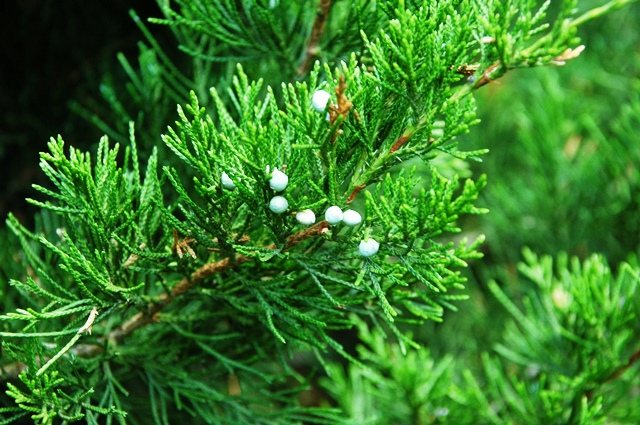
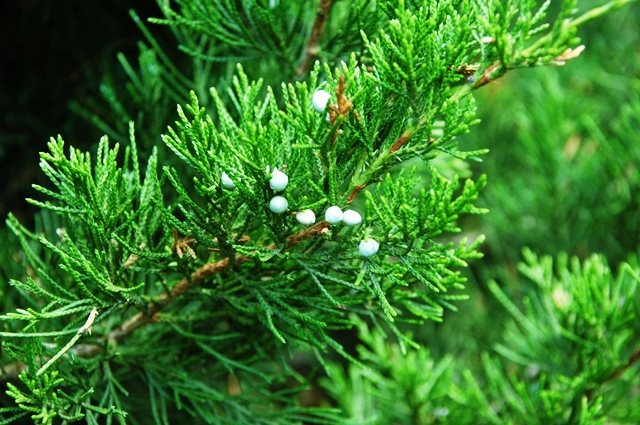
Virginsky is a tall plant with a columnar crown. On the territory of the Russian Federation, it grows in city parks. Also found in Canada and America. According to its properties, the Virginia variety is shade-tolerant and drought-resistant.
Horizontal
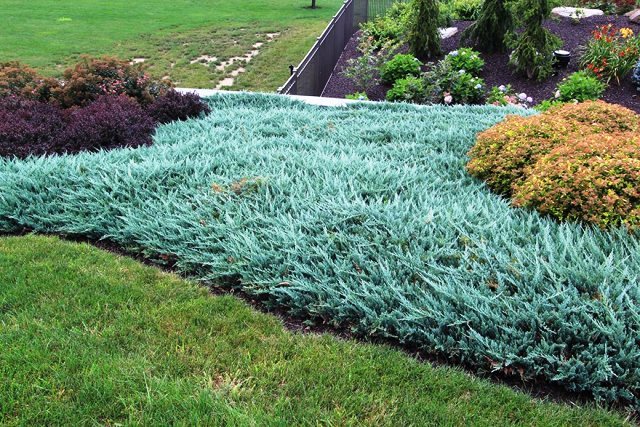

The plant has gray needles, which turn brown with the arrival of winter. Undemanding to the soil, but suffers from dry air. Next to such a juniper, a Canadian spruce conic is often planted.
In nature, there are also Turkestan, Siberian and hard junipers. Each of these varieties is subdivided into varieties. The shape of the crown is different for each variety. However, most of them are bushy, conical or ovoid.
Common varieties of juniper
Blue


Blue (Blue Forest, Blue moon, Blue chip) is a juniper with blue needles. Such shrubs are able to decorate any garden plot or composition. Plants have a low height and a creeping crown. In the garden, they are often planted next to lilacs, mock orange, Tatar honeysuckle and hydrangea.
Tree-like


Arboreal – this type of culture reaches a height of 15 m. The needles have a bluish-green hue. When ripe, the fruits turn purple-black. Mostly grow in the forests of North America, Mexico and Asia.
Golden Wings

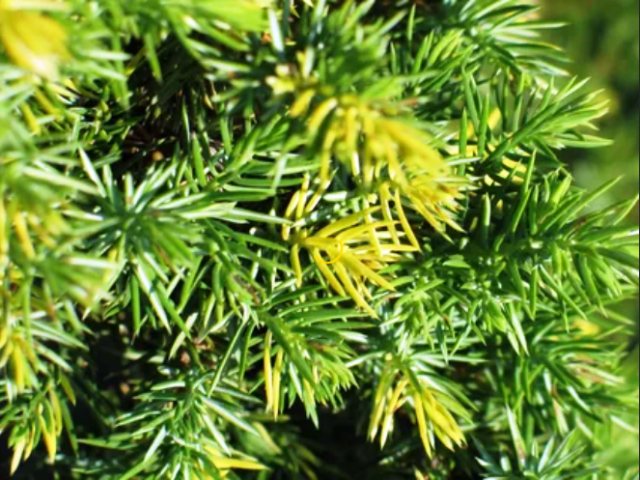
Gold Star, Golden Wings – varieties of juniper, distinguished by golden needles. The branches of the shrub are spreading, they combine 2 types of needles. Within 10 years, they grow up to 1 meter in height. Unpretentious to climatic changes and soil.
Yellow Sapphire
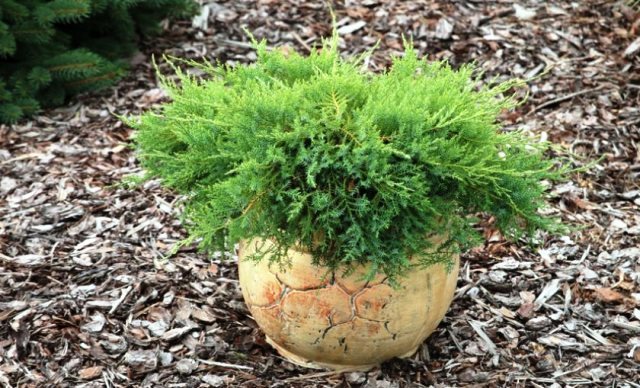
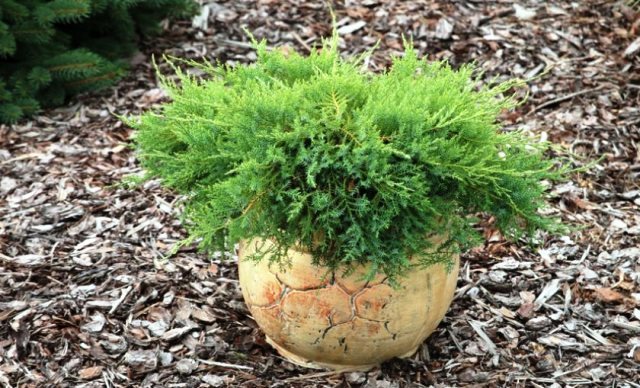
Yellow Sapphire is a low-growing bush with a spherical crown. The needles have a yellow tint, it remains so regardless of the season. The crown grows in width by no more than 1 meter.
Green Carpet
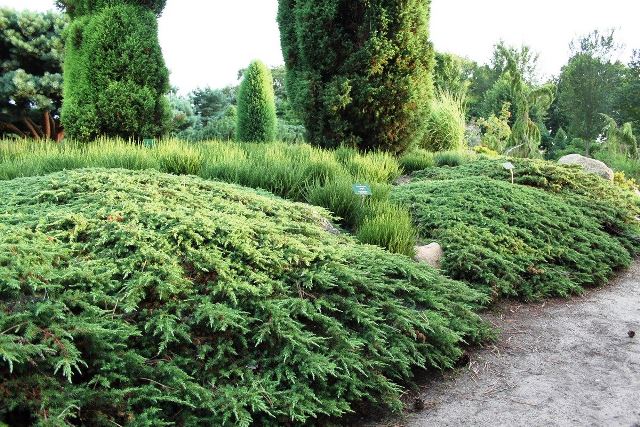

Green Carpet is a variety belonging to the common juniper. Drought-resistant, able to grow on different types of soil. Photophilous, but also tolerates partial shade well. Reaches maximum splendor with proper care.
Numerous types of junipers differ not only in appearance, but also in the rate of crown growth. It all depends on the conditions and in what area the juniper grows.
Growing a juniper and further caring for it is a simple procedure. However, it requires special knowledge and skills. With proper care, the plant will live up to 600 years.
Planting Cossack juniper
In order to grow a beautiful Cossack juniper on your site, planting and caring for it must be carried out in accordance with all the rules for keeping Cypress. After the right place is:
- Decide on the landing time. Cossack juniper is best planted in mid-spring or early autumn, when the weather is stable and warm and moderately humid outside.
- If you bought a seedling with open roots, then they should be treated with any growth stimulant, for example, Kornevin’s solution.
- Container seedlings are saturated with water before planting. The plant, together with an earthen lump, is placed in a pan with warm water for 2 hours.
- The seedling hole should be 2-3 times larger than the existing earthen lump.
- Plants are placed at a distance of 50-150 cm from each other.
- A drainage layer of sand and broken brick with a thickness of at least 20 cm must be laid on the bottom.
- The place of transition from root to stem in adult plants is located 5-10 cm above the ground, and in young seedlings it should be placed flush with the ground.
- Having placed the plant in a pit, it is sprinkled with a soil mixture consisting of two parts of peat and one part of sod land and sand.
- Plantings are abundantly watered and mulched with peat, pine bark or compost.
Where to plant Cossack juniper?
When choosing a place for planting Cossack juniper, you should give preference to:
- Open sunny areas. In the shade, the shrub will lose its decorative properties.
- Perennial flowers and other conifers will become the best neighbors. At least 1,5-2 m should be retreated from other shrubs.
- The plot should not be close to the groundwater surface. The plant does not tolerate wet roots.
- Juniper Cossack, the soil for which must have a neutral reaction, grows well on loose permeable soils. For this, peat with sand is introduced into too heavy areas.
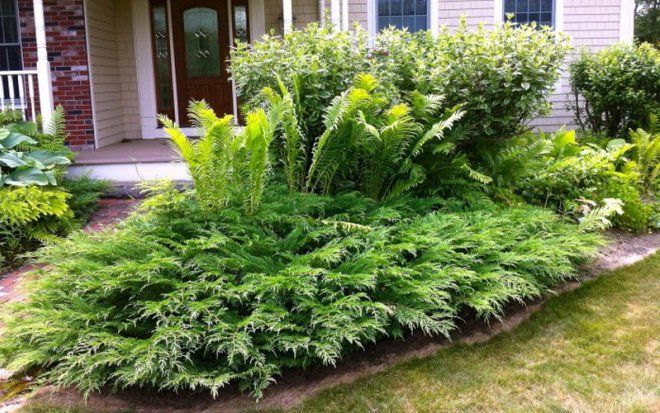

Juniper Features
Juniper is an evergreen long-liver of the Cypress family, a tree or shrub from half a meter to 20 m in height. Depending on the type, its branches are decorated with scaly needles or straight needles. It is a sprawling shrub with flexible branches on which you can sit like on a carpet. It can be tree-like, with a lush pyramidal or conical crown.
Juniper can be tree-like, with a lush pyramidal or cone-shaped crown
Juniper has unisexual spikelets: female – in the form of round greenish cones, male – in the form of earrings with 3 or 4 stamens. It blooms in June and bears fruit from August to September. Cones juniper contain loose brownish pulp, which is widely used for medicinal purposes. In general, the juniper is a forest inhabitant of the northern regions. But it is successfully grown in suburban areas. Indeed, in addition to its medicinal properties and an incredibly pleasant smell, it is amazingly beautiful.
After reading about this decorative doctor, I wanted to plant a juniper in my dacha, and I have already chosen a place. And in order not to forget the rules of landing and leaving, I will describe them here, maybe they will be useful to you))
Juniper Cossack – care
In the content, the Cossack juniper of the Mac variety and other varieties does not add absolutely any trouble to the gardener, but this does not mean that the plant should not be taken care of at all. The main activities that are important to regularly carry out the gardener:
- Watering
… Not frequent, but plentiful and obligatory mulching of the soil under the plant. - Sprinkling
crowns in the warm season. - Trimming
decorative and sanitary. - Feeding
… Fertilizer for the plant is applied annually at the beginning of spring. During this period, it is good to use Nitroammofoska, which contains the optimal set of trace elements necessary for the shrub. - Shelter for the winter
… Adult shrubs are frost-resistant, but young seedlings of the first two years of life should be covered in autumn with pine branches or spruce branches.
How to water a Cossack juniper?
Any variety of this fragrant shrub, including the Cossack juniper Mint julep, does not tolerate excess moisture. With an abundance of water, root rot processes begin, and pathogens develop on the plant. Watering rules boil down to the fact that:
- The shrub is watered no more than 3-4 times during the entire growing season.
- The volume of water for an adult bush varies from 10 to 30 liters.
- The liquid temperature should not be lower than + 15 … 20 ° С.
- Be sure to have a layer of mulch under each plant.
- In summer, to preserve their decorative effect, the bushes are regularly and abundantly sprayed with water. Sprinkling is arranged in the evening, when there is no longer the burning sun rays.
Pruning Cossack juniper
Experienced gardeners say that the shrub independently forms a beautiful lush crown, so the question of how to cut the Cossack juniper does not arise so often. The following requirements are imposed on the trimming procedure:
- Sick and dry branches are pruned regularly in spring or fall.
- To restrain the growth of new branches, pinching of the apical buds can be carried out. The procedure stimulates branching.
- To give the plant a decorative look, only a clean, sharp tool should be used.
- Only branches, heavily thickened plantings or growing in unnecessary directions are cut off.
- If pruned too much, the shrub may stagnate or even become sore.
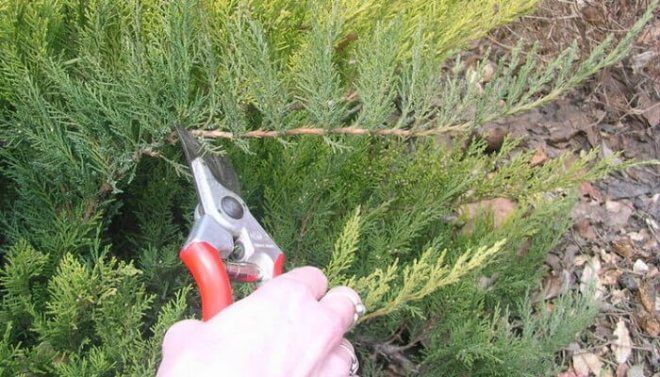
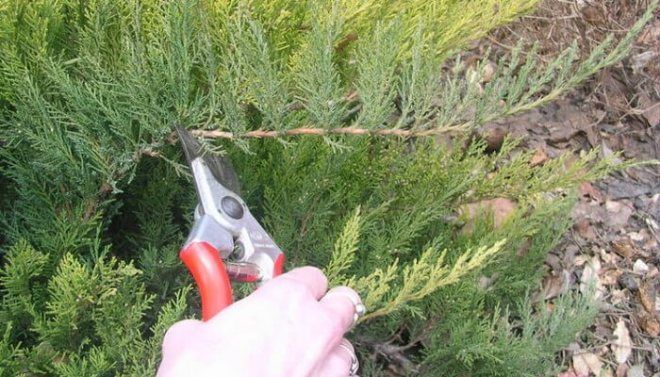
Plant Care
Junipers, undemanding to the growing conditions, still need easy care, which includes rare abundant watering, top dressing, pruning, shelter for the winter and protection from diseases and pests.
Watering
Growing juniper in a pot culture
Young plants and dwarf forms with a small root system, they need more moisture. In rainy weather, watering is not carried out, and in dry weather it is watered twice in the first month after planting, and then once every 20-30 days. Junipers love washing the crown with sprinkling – this refreshes the needles, washes away dust, allows you to emit a wonderful smell, and release useful phytoncides. The procedure is best done in the evening or early in the morning, otherwise water droplets warmed by the scorching sun can cause burns.
Mature, developed shrubs and trees are watered three times per season, with sufficient moisture they develop better, the needles become brighter, more saturated. Depending on the size of the plant, 10-30 liters of water is poured under the root. At the same time, most species tolerate long dry periods well and, in general, junipers are better to “underfill” than “overflow”.
To reduce the frequency of watering and maintain soil moisture, the use of mulch will help, under which special permeable materials, such as lutrasil, can be laid. This technique will help protect young junipers from drying out and weeds.
Feeding
Under natural conditions, junipers grow on poor stony, sandy loam, less often clay soils. Species plants are undemanding to the nutritional value of soils (exceptions – chinese and scaly junipers). At the same time, modern varieties and hybrids are more whimsical and it is desirable to fully fill the planting pits, as indicated above.
In this case, the first two years of the nutrient content of the substrate will be sufficient for the development of seedlings, and starting from the third year, a complex fertilizer is applied every spring to replenish nutrients, enhance growth and strengthen the plant. Liquid fertilizer for conifers Stimovit, containing both organic and mineral substances, is successfully used. For root top dressing, 100 ml of the solution is diluted in 4 liters of water and watered with moist soil around the perimeter of the crown.
Even if the soil is sufficiently saturated with organic matter and fertile, it is necessary to regularly introduce mineral substances into the soil. The universal brands of granular fertilizers for conifers AVA and Royal Mix, containing a full range of macro- and microelements, including magnesium and iron, have proven themselves well, which is important for the prevention of chlorosis and other non-communicable diseases.
Trimming
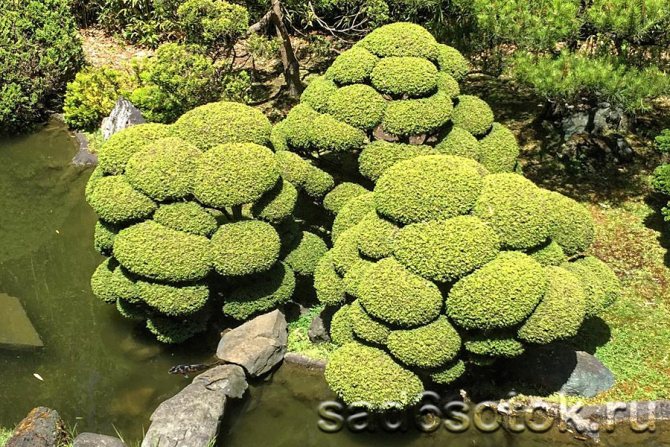

One of the options for pruning juniper
Junipers, in contrast to the same spruce, lend themselves well to pruning. And although many varieties easily keep the ideal shape, for example, the wonderful Canadian Sentinel, with its pressed branches and an even crown, others may experience deviations from the norm.
By pruning, they regulate branches growing at an unexpected angle, shoots that do not correspond to the color variety, as well as too powerful shoots that spoil the overall impression. Moreover, in those vaccinated on the stem plants, a predominant growth of the crown can be observed on one side, such one-sidedness looks ugly and can lead to breakage of the scion.
Uneven growth of the crown most often looks untidy and is subject to regulation in creeping or rounded shapes, in that time varieties with natural “disheveledness” do not need fixing.
Pruning is carried out using a secateurs, young growths are pinched with fingers by a third or half of the length, depending on the purpose of pruning. Out of place, a powerful shoot or an incorrectly colored branch is removed completely at a fork, which will make the cut invisible.
The optimal pruning time is the end of June., at this time, the growths have already fully advanced, and the shoots remaining after pruning will have time to recover and leave stronger in winter.
Formative pruning is also used when caring for hedges, as well as for giving geometric shapes to shrubs, but this requires special skills, knowledge of growth characteristics and a creative approach.
Pest and disease control
Strong junipers are less likely to be affected by diseases and pests than other conifers, but insects still damage them, a fungal infection can cause severe damage. Young weak seedlings or old weakened plants are most susceptible to pests and diseases.
vermin
A variety of caterpillars eat needles and damage young growths, of which the most common pine mothand juniper notch-winged moth… Outwardly similar to a pubescent white aphid small Hermes settles on a variety of conifers, adult insects and larvae suck sap and damage the needles.
Adults juniper and pine sawflies, as well as their caterpillars, destroy the tender needles on young shoots, after which their surface resembles a burnt one. Small larvae juniper mealybugsettling on young branches, they also gnaw the needles, it crumbles, and the damaged branches become infected with a sooty fungus.
To prevent the attack of pests in May, plants are treated with Actellik, Engio or Decis, repeating the treatment if necessary throughout the season, but at least twice after 7-10 days. It is better to alternate preparations.
Round holes in the bark, under which the species have winding passages, are made by the larvae of various pests, for example, bastards or gold… If such damage is observed, the plant is treated with one of the insecticides, and undiluted Actellic is buried in the holes.
Fungal diseases
Young and weakened plants with a lack of space and light, high humidity of the soil and air suffer from fungal diseases.
Fuzarioz characterized by reddening and browning of the needles, the spread of infection begins from the upper branches, which gradually become bare and dry out. Infection alternariosis manifests itself in the form of a black velvety bloom on brown needles.
With the symptoms of these fungal infections, the dried branches are removed, the ground part is treated and one of the fungicides is added under the root – Fitosporin M, Fundazol, HOM, Maxim. Under unfavorable weather conditions, for a preventive purpose, the same treatment is carried out in April-May.
The most dangerous rust visible on branches in the form of multiple orange pustules; in the late stage of the disease, the bark is affected, which thickens and bursts. Rust-infected branches are cut and burned, after which the plant is repeatedly treated with fungicides.
Defeat biorella cancer manifests itself in the form of necrosis of the bark and deep ulcers, followed by drying of the branches. The affected parts are cut to healthy wood and burned, the cuts and the whole plant are treated with a solution of copper oxychloride. To prevent infection with regular pruning, use a clean tool, fresh sections are treated with a solution of copper sulfate.
For the prevention and treatment of spring burns use the drug Ekoberin, dissolving the granules in water and spraying the needles at least 3-4 times.
Preparation for winter
Junipers are resistant to temperature fluctuations and cold, but they do not tolerate frosty, windy, little snow winters with low air humidity, which leads to drying out of the soil and loss of moisture in the needles. In such cases, it is advisable to pour more snow at the root system and crown, increasing the humidity and protecting the soil at the roots from weathering. Young shrubs with a small crown in winter, it is worth covering with spruce branches, dead wood, trapping the snow.
Varieties with a spreading fragile crown can be damaged in case of heavy snowfall and in winter, branches are tied. Tying with covering materials, in particular, with burlap, is a common method of shelter, but it must be used with caution, since in mild winters this can lead to warming, falling of needles, and an outbreak of fungal diseases.
How to propagate Cossack juniper?
One of four methods can be carried out independently to reproduce the Cossack juniper:
- Seminal
… It is the most unpopular, because for germination you need to collect seeds in time and spend a long process of stratification in the refrigerator. In addition, after planting, the seedlings can be seen only after 2-3 years. - Using cuttings
… The tops of the shoots of adult plants are cut by about 10 cm. The cuttings are kept in water with the addition of any growth stimulant. Then the prepared branches are planted in wet sand. After rooting, seedlings can be planted in the ground in cloudy weather. - Layers
… This method is great for creeping plant forms. Daughter branches are pinned to the ground with special staples and sprinkled with soil. Periodically, daughter plants are watered. Rooting will take place only next year. - Immunizations
… A little popular method due to the low survival rate of grafts. Expensive elite varieties are grafted onto simple bushes using a special garden tape.
Cossack juniper: how to plant and care for coniferous shrubs
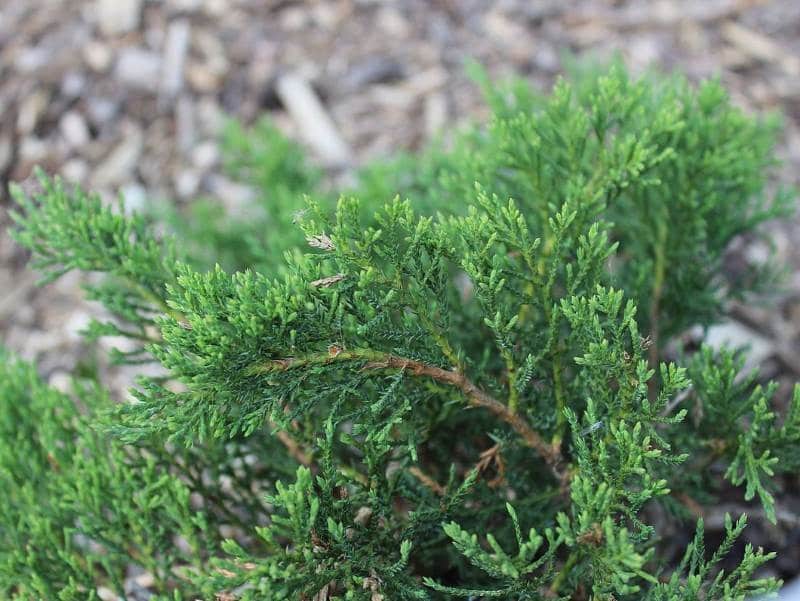
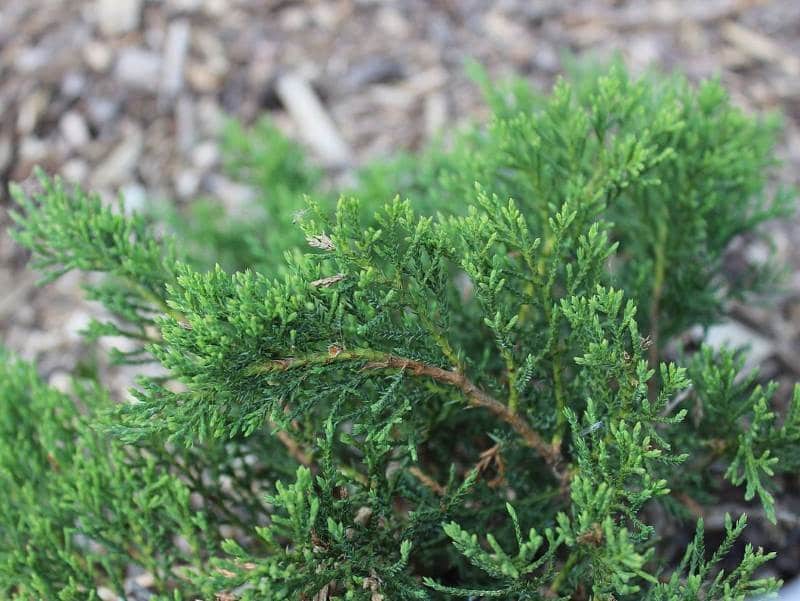
Coniferous crops occupy a special place in landscape design, because in addition to their magnificent appearance, they also saturate the site with a pleasant aroma, gallop away and give good emotions. If you want to decorate the territory with original cultures, pay attention to the Cossack juniper, which is distinguished by its rapid growth and excellent spreading shape.
How to transplant Cossack juniper to another place?
The culture is sensitive to changes in habitat, so you should not replant junipers without special need. If the procedure is necessary, then you need to adhere to the following rules:
- Six months before the proposed transplant, the bush is dug around, slightly cutting the roots. During this period, the plant will have time to form a more compact root system.
- The correct timing when to transplant Cossack juniper. It is better to do this in the middle of spring, so that the bush has time to take root in a new place before the cold weather.
- The planting pit is prepared according to the same rules given above for the initial planting of seedlings.
- The bush is carefully dug in and placed on a sacking, keeping the earthen lump as much as possible.
- At the new place, the orientation of the branches to the cardinal points, which was at the previous place, must be retained.
- Planting depth should not differ from the previous location.
- After transplanting, the plant is watered and, if necessary, tied to pegs.
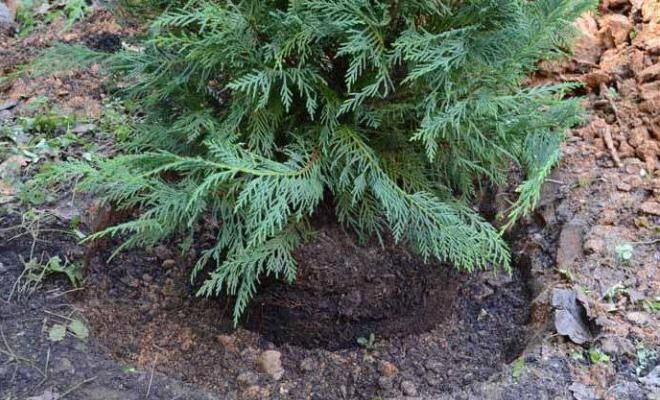
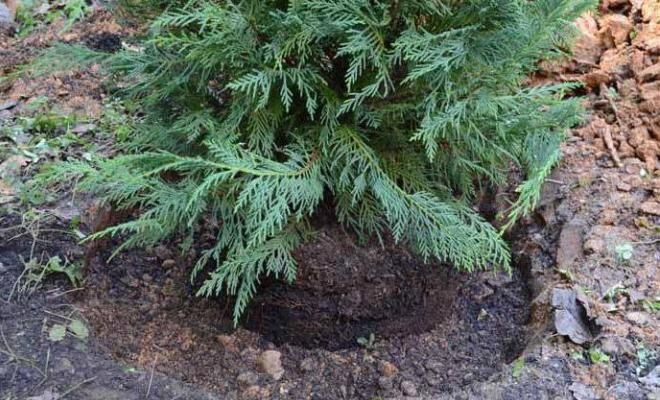
Secrets of landing
Juniper is unpretentious to the composition of the soil, however, it is extremely important to provide it with loose soil. The soil on which the tree is unlikely to be able to take root is clayey.
Plants are easily tolerated when they are still young. A tree that is already mature, as a rule, will die even if it is provided with the necessary conditions, sheltered from sunlight and for the winter.
A seedling grown in the wild is almost impossible to transplant and grow in the garden. For this, it is better to use varietal specimens. Although, sometimes there are exceptions.
Rooting Juniper Cuttings
The best periods for planting are early spring and mid autumn… First, the soil should be prepared, and the plant is deeply dug in a year before the change of location. In this case, the diameter should not be less than the diameter of the crown. As a result of this procedure, the root system is pruned, and within a year the roots will be able to recover and transfer the transplant more calmly. The size of the planting hole should be twice the size of the earthen coma. The dug out plant must be treated with a growth stimulating agent. If the soil is dry enough, the tree should be placed in a container of water for several hours and protected from sunlight.
When planting, it is important to maintain the orientation of the tree to the cardinal points and thoroughly water the hole with water. Once the tree is planted, it must be treated with insect control chemicals. It is important to carry out the procedure until the tree completely takes root in the new conditions.
To avoid the development of fungal diseases, the plant should be watered carefully so that water does not get on the needles and trunk.
Following such simple advice, you will certainly be able to grow juniper, amazing in its appearance and properties, on your personal plot.
Juniper Cossack – diseases
The culture has a strong immunity to most ailments. Pests rarely infect shrubs because of the specific smell and poisonous essential oils in the branches and needles. However, with improper care, the Cossack juniper is affected by diseases caused by a fungus:
- Fuzarioz
… Appears by yellowing of the upper part of the shoots and the death of needles. Appears with excess moisture and lack of sunlight. Affected plants are removed from the site, and neighboring plants are treated with Baktofit. - Alternaria
manifested by drying out of needles and a dark bloom on the shoots. The affected shoots are removed, and the shrub is sprayed with a 1% solution of copper sulfate. - Rust
… It appears as bright swollen growths on the bark and at the root collar. When the first symptoms are found, all affected shoots are cut off, and the plantings are sprayed with Bordeaux liquid.
Planting and caring for Cossack junipers
The culture prefers sunny territories in which the groundwater is deep enough. In the shade, the bushes grow loose, do not have an attractive shape. Planting of seedlings with open rhizomes is allowed to be carried out either in April or in September, container bushes are planted during the growing season.
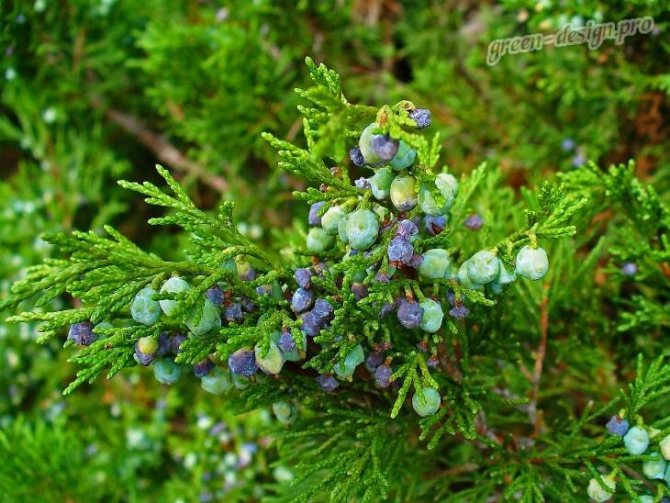
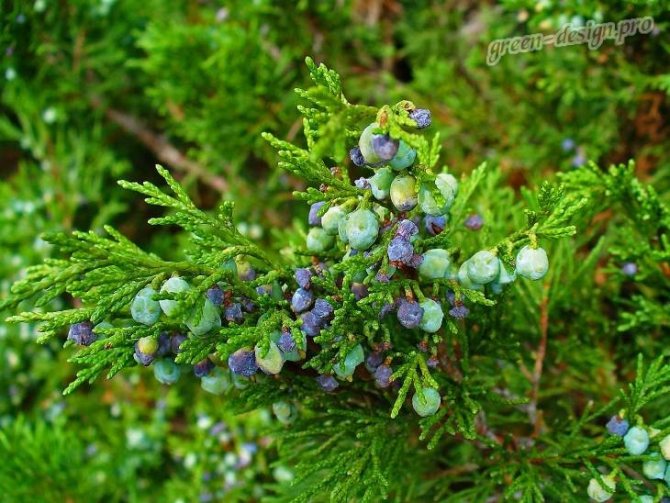
Juniper Cossack turns yellow – what to do?
There are situations when the Cossack juniper Blue Danub and other varieties lose their decorative effect due to yellowing of the needles. There are several reasons for this phenomenon:
- Fungal diseases mentioned above.
- Insect pests such as aphids, scale insects, gall midge, pine moth.
- Drying out or waterlogging of the roots.
- Increasing the acidity of the soil or adding alkali to the soil.
Measures to combat Cossack juniper disease when a fungus or pest is detected:
- Removal of affected shoots.
- Spraying with fungicide for fungal infections and insecticide for pests. You can spray with a solution of 5 liters of water, in which 1 ampoule of Epin and Zircon preparations are dissolved.
- Re-treatment after two weeks. If necessary, repeat the procedure until complete recovery.
How to transplant an adult plant
It is not recommended to transplant an adult juniper unless absolutely necessary – a very small survival rate. If you had to carry out this procedure, then the plant must be carefully examined for injuries and diseases.
Interesting! If a juniper grew on loamy soils, it will root better than one that grew on sandy soils.
When transplanting adult specimens, the best period will be August-first half of September. Planting in spring, at normal soil temperatures, is also allowed. In any case, the plants are shaded from the south to avoid burns from the active sun after winter.
How to plant a juniper in the fall: features of autumn planting
Juniper (heather, juniper) is a coniferous shrub that belongs to the genus of evergreens, the cypress family. An ancient plant. Its modern Russian name has the Proto-Slavic root “juniper” (translated – knit or weave). In the wild, the distribution area is mainly the northern hemisphere. Wherever there are forest-steppe: western and eastern Siberia, the European part of Russia, other European countries, North America.
Description and characteristics of the plant
The life span is 400-500 years. It can reach a height of 30 meters, but different types are classified: low, medium, tall. In the Russian climate, undersized up to 1 meter is more common. It is well suited for decorating an infield, like a thuja.
Juniper buds are almost without scales, sometimes they are shrouded in leaves. A whorl of needles with a longitudinal groove. In young plants, the leaves are needles, over time they become scaly. The needles are the same as that of all cypress trees: green-blue in color, with 3 edges and sharp ends.
Spikelets are of two sexes. Male stamens are paired with scales with anthers that easily break off. The female spikelet consists of a single whorl or 4-6 whorls of carpels with 2 buds.
Juniper varieties
In nature, there are many types of this shrub. Let’s consider the main ones.
Tall varieties
- Virginia. It grows up to 25-30 m. Small diameter – 1,3-1,5 meters, with short green needles. The cones are blue.
- Ordinary. Great for hedges. Height up to 3 meters, strong pine needles smell. The branches do not grow quite symmetrically, outweighing on one side.
- Chinese. It grows in the shape of a cone, 20-25 meters long. It has long and thin needles of bright green color. Fruits are dark brown. It tolerates frost well.
- Hard seed is a rare representative. Listed in the Red Book. Moisture resistant, not subject to decay. 5-10 m height. The needles are 3 mm green with a blue tint.
- Solid. Owner of the most lush crown. The color is emerald with a yellowish tinge. In nature, it grows in rocky terrain.
Low-growing
- A golden carpet (15-30 cm) creates a beautiful yellow cover of needles, a creeping plant up to 2 meters in diameter. If you plant it in the shade, and not in a sunny place, then the needles acquire a classic green shade for them.
- Lemon (up to 40 cm). The twigs seem to bulge up, bristle. Has a lime-yellow tint if grown in a well-lit area.
- Nana (up to 50 cm). With soft needles, the color of fresh greenery. Doesn’t tolerate too shaded places. Extremely unpretentious in care. It tolerates low temperatures well.
- The Prince of Wales is a fabulously beautiful gray-gray with scaly needles.
- Tamariscifolia – blue needles with a silver tint.
Planting material
Seedlings are chosen in late summer – early autumn. This is the most favorable time for planting junipers. There should be no frost and, conversely, no heat. It is best to purchase them in a specialized network of shops for gardeners and gardeners. Buy 3 year old plants, researching for diseases.
Warning signs during the purchase: withered twigs, yellowish tint of needles (unless it is provided for this variety, for example, “Golden Carpet”), damage, a lump of soil crumbles and does not keep its shape, there are fragments of the root.
- with elastic fresh needles;
- with a large earthen lump that fills the entire package or container;
- the root system is not damaged;
- the color of the needles corresponds to the variety;
- no pieces of root or broken off twigs.
Where to plant shrubs
Choose a place for a juniper depending on the type of plant. In general, it should be a well-lit area or partial shade. There are no other requirements.
What should be the soil: preparing the soil
The first rule of how to plant junipers in the fall is to pre-fertilize the land. The soil for varieties: common juniper, Asian and Cossack must have a pH above 7. This is achieved by adding slaked lime or dolomite flour to it.
All other species grow best in acidic soil. This is how it becomes when fertilized with organic substances: manure, compost, mulching.
Planting junipers in autumn
It is best to plant the plant in spring or autumn, observing the technology. Determine the acidity of the soil. This can be done using a pH meter device, or by the presence of weeds of certain varieties.
Horsetail, sorrel, plantain, ponytail
Above 7 alkaline
| pH value | Weeds | Juniper varieties suitable for soil with this pH |
| White sandman, poppy | Common, Cossack, Central Asian. |
Following the step-by-step instructions will help to plant the juniper correctly:
- fertilize;
- watering;
- prepare holes 15 cm deep;
- small pebbles or broken brick are poured into the bottom of the hole;
- a mixture of sand, clay soil, peat is poured and left for 14 days;
- position the seedling, trying not to injure it, and the rod should be 5 cm above the soil level;
- covered with earth.
Reproduction by cuttings
This method is the most used one. Planting material is harvested in March. The processes are selected where there are several nodules. The branches are cut off so that a piece of bark is preserved in this place. They are smeared with a special root-forming solution and planted in humus or a mixture (1 part of sand, 1 part of soil, 1 part of peat). Sprinkle sand on top. The root system will appear in 6 months. The transplant can be done after 18 months.
Planting Seeds
Juniper seeds are taken from adult, fruiting crops. When the berries begin to darken. They are subjected to thermal and mechanical treatment. They are kept in the freezer for several months. This is done so that the shrub can withstand low temperatures. Only then can they be planted on open ground. This process is called stratification.
They do this on their own: take a mixture of peat, moss, sand about 10 liters. Divided into two parts. First, put one part in a box, sow with seeds, and pour the second on top completely. The box is put on the street for the winter so that it is covered with snow. In May, you can plant it in the garden. Weed, loosen and water regularly until full seedlings grow.
How to look after
The plant is resistant. Perfectly survives severe frosts, sultry heat. When planting, the juniper must be watered abundantly. Water once a week for the first year. Then you can not water at all.
There are special rules for care immediately after planting work:
- Mulching with peat with sawdust. The cover must be 4 cm thick.
- Conduct top dressing with nitroammophos (50 grams are diluted in a bucket of water and watered at the root).
- Regular irrigation is unnecessary. Exclusively during dry weather.
- In the morning and evening, spray the crown with a shower head or spray bottle.
- Cut dry, limp twigs.
Cold season for juniper
In order for the handsome coniferous man to survive the winter, they create a special protective shelter before the first frosts. This is important for a young plant, in the first year after planting in the soil. Parchment paper, spunbond (synthetic nonwoven fabric) and cotton fabric are used as such shelters. They wrap everything in two layers, tie it up with a rope, leaving 10 cm below. It is not necessary for a young seedling to put a screen. This coverage is enough.
Why culture doesn’t take root
A juniper can disappear if an old plant was used as a seedling. Since its roots are inevitably damaged, and they heal for a very long time. Moreover, the variety is ordinary. Low-growing varieties are easier to grow.
If the recommendations for the plant variety are not followed, the juniper does not take root well. There are thermophilic varieties that do not tolerate frost, acidic soil, etc.
Florist tips
Damaged branches are cut off to the level of a healthy area by sultry heat or long frosts. Clay is added to soil containing a lot of sand, or very dry. If you sprinkle the needles with plain water, they will retain their elasticity and freshness longer.
Planting an evergreen coniferous plant in your area is a very wise decision. Indeed, in addition to a pleasant smell, it is beneficial – it has a bactericidal property (kills bacteria). The branches are cut and placed in the room where the patient with bronchial asthma, or ARVI, lives. From the variety of varieties of juniper bush, it is easy to choose the one that suits the specific idea or idea of its owner.
Description and characteristics of culture
In many ways, the description of the Cossack juniper coincides with the botanical characteristics of most creeping shrubs of this genus of conifers, evergreens. The height of the bush reaches 1-1,5, it grows horizontally in relation to the ground level. Forms beautiful, lush thickets of branches covered with needles in the form of scales, located on the stems according to the principle of tiles. In plants of a younger age, the coniferous cover is slightly different: it resembles green needles with a bluish bloom. A feature of this variety is considered to be a rather bright aroma that the shoots emit if they are crushed.
In addition to shrubs, the species also includes trees that do not grow higher than 4 m in height. Their trunks are twisted, and the bark is colored brown with a reddish tint. But they are quite rare, most often the Cossack juniper is represented by perennial shrubs.
Variety of plant varieties
Numerous varieties of Cossack juniper allow you to choose a suitable variety, since their total number is about 70 variations. For example, Juniperus sabina, Rockery Jam and others. They are cold-resistant, do not require much maintenance, tolerate drought well, and like well-lit areas. Their growth rate is quite high. Having created the necessary conditions for the plant, you can get a healthy, fluffy bush with branchy branches. He will delight with his noble appearance for 30 years. The evergreen shrub will help you to easily decorate the garden in an exquisite and noble style for many years, as well as get a kind of “air purifier and disinfector”.
Arcadia variety
Ground cover juniper Cossack Arcadia is an evergreen coniferous bush that adorns household lands throughout the year, as it almost never loses its high decorative effect. Its shoots grow parallel to the ground. At the age of ten, the dimensions of the plant are 30 cm in height and 1 m in diameter. At a more mature age, its volumes reach a maximum value: the height is 50-60 cm, and the diameter is 4 meters.
Juniper planting rules
Cossack juniper is highly respected by landscape designers, as it practically does not require taking care of itself. Prefers well-lit areas, but can grow in partial shade. It is better to pick up the soil for it neutral or slightly acidic. Planting is carried out in deep holes, about 70 cm. Their volume should exceed the dimensions of the root system, taken together with a lump of earth, two to three times. If the soil is heavy, then it is necessary to organize good drainage. To do this, when landing, a thick layer of gravel (about 20 cm) is laid on the bottom of the pit. As drainage, you can take brick broken to the size of gravel or coarse sand. The neck of the root should remain flush with the ground when planting.
Watering and shelter is an important care element
The main thing that you should pay special attention to when caring for a juniper is the organization of proper watering. The fact is that the Arcadia juniper reacts poorly to dry weather and dry air caused by the heat. In hot weather it must be watered, preferably by sprinkling.
Another nuance is shelter for the winter. In autumn, the root part of the shrub is sprinkled with a layer of peat. Its thickness should be at least 10 cm. If the plants are very young, then they are covered completely, along with the shoots, with the help of spruce “paws”.
Rockerygem variety
Another variety growing horizontally, Rockerygem Cossack juniper is an excellent choice for those who want to get a well-branched shrub with beautiful green (with a bluish tint) needles. It is prickly, thin, scaly, juicy in color. Forms small (5-7 mm) green cone-berries, the color of which gradually turns into blue.
It grows quickly, in a year its dense crown grows 20 cm in width and 2 cm in height. At the age of ten, the height of the bush will be about 20 cm, and the width will reach 2 m in diameter. Older shrubs are distinguished by large sizes: their height is 50-80 cm, and in width they can reach a maximum mark of 2,5 m.First, the shoots branch upward, spreading horizontally, then they begin to cover the ground, bending under their own weight … Although this variety does not put too high demands on the soil, it is advisable to select a nutritious, well-drained and moist soil for it.
The peculiarity of the variety is that it can be planted in large cities where industrial complexes are located, and the air is not distinguished by high levels of purity.
Juniper of the Rockerygem variety will take root there perfectly, withstand even significant environmental pollution. Moreover, it will help improve the composition of the air by destroying harmful microorganisms and giving it a light spruce aroma.
Variety Tamariscifolia
Unlike the previous variety, the Cossack juniper Tamariscifolia grows slowly. When he turns 10, he grows up to 2 m in diameter and up to 30 cm in height.
The variety enjoys well-deserved respect in European countries. And this is not surprising, because its green needles with an exquisite, gray bloom, blue-green cones-berries, as well as its small size, make it an attractive crop for planting in rock gardens, around garden ponds, along paths. Its needles saturate the air with a pleasant juniper scent, which not only perfectly refreshes the garden, but also protects the health of its owner.
The Tamariscifolia juniper is undemanding to the soil, as it can grow even on soils strewn with stones and sandy substrates. It tolerates cold weather and small shade. Juniper Tamariscifolia also shows enviable patience for drought. Likes moderate watering, but reacts negatively to swampy soil.
Blue Danube variety
The Cossack juniper Blue Danub beautifully spreads its branches along the ground, which has become widespread for its ability to grow rapidly. Its shoots grow 20 cm during the year. Inside the bush, the needles resemble bluish-green needles, and outside the stems are pubescent with a scaly green coniferous cover. Having reached a decade, plants are characterized by the following dimensions: height – 0,5-1 m, width – 1,5-2,5 m in diameter.
In order for the Blue Danube juniper to form a dense crown, it needs to organize spring pruning. The rest of the variety is unassuming. Feels calm in soils with a lot of sand and clay in the composition. It perfectly tolerates urban conditions, saturating the air of the metropolis with phytonicides. It is cold-resistant, but does not like dry air, therefore, in especially hot weather, it needs to organize irrigation. Due to its rich color, the plant has excellent decorative properties, which allows it to be used in single plantings or as an element of a flower arrangement.
Grade Mas
The fast-growing Cossack juniper Mas has extraordinary vigor. The annual growth of stems in diameter is 20 cm, and in the same period they grow by 10 cm in height.The volume of an adult plant cannot be called compact: its height is 2 m, and the diameter of the bush is about 8 m. Such a giant requires a large plot of land, which is needed take into account when planting it.
In shape, it resembles an ordinary truncated cone, turned upside down. But this appearance is retained only in young plants. Later, it grows horizontally and becomes a wide bush spread in breadth. The needles are needle-shaped, prickly, green in color with a bluish-blue tint, which becomes slightly lilac in winter.
Copes well with cold and droughts. But nevertheless, it is better to help him a little to overcome unfavorable weather conditions, especially in the first two years after planting: mulch with peat for the winter, and arrange sprinkling on hot days. The shrub even tolerates cardinal crown pruning caused by excessive growth intensity. Watering loves, but in moderation, without excess water, waterlogging the soil around the shrub.
Best for planting in large parks or gardens where the area allows it to grow calmly and showcase the beauty of its spreading branches.
Glauka variety
The horizontal Cossack juniper Glauka lets all its growth force into the growth of creeping shoots. Its average dimensions are 1,5×1,5 m, but in some cases the bushes can grow up to a diameter of 3 m. This variety is a great option for creating green areas in large city parks and residential areas. But even for small gardens located near a private house, it is perfect.
Outwardly, the Glauka variety is very attractive. Its branches with blue-green, scaly needles, as if hovering above the ground, give an unusually spectacular look to any garden. On the shoots, fruits with a blue tint are formed, something in between a cone and a berry. The crown is formed very lush and beautiful, if desired, you can do a haircut, thereby limiting the excessive growth of the plant.
Variegata variety
The Variegata juniper creeping on the ground will also leave few people indifferent. It is an unusually flattened bush with upward-facing branches and an asymmetrical crown. In care it is completely non-capricious, tolerates drought, light shade, cold, air pollution, undemanding to the soil composition. The spreading branches of the plant form a flat-round bush, 0,3-0,4 m high and 1,5 m in diameter. At the same time, the coniferous shrub grows rather slowly – it grows 10-15 cm of the crown per year.
Advantages and disadvantages of the variety
Juniper virginsky: description, best varieties
The undoubted advantage of the Cossack juniper is its unpretentious care. Dense bushes perform well a decorative function, covering the ground with a dense layer of greenery. Such a cover prevents weeds from spreading, freeing the farmer from weeding activities. The ability to tolerate smoke and gas contamination of the air makes it possible to plant shrubs within the city.
The significant disadvantages of the variety are:
- poor tolerance of the close occurrence of groundwater;
- exactingness to irrigation conditions;
- pronounced aggression towards neighboring plants for territory, water and nutrients;
- pronounced poisonous property of the fruit;
- specific pungent odor.

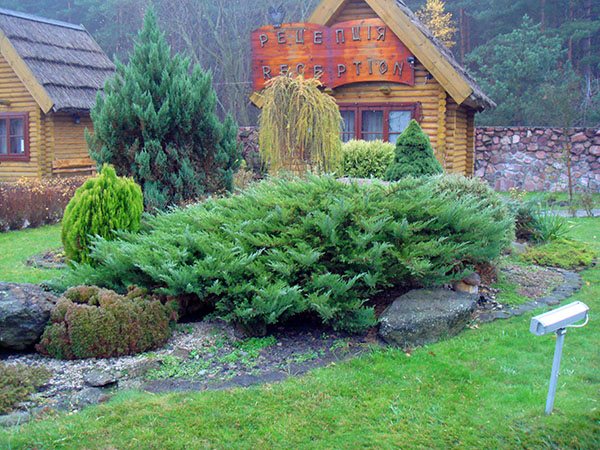
Advantages and disadvantages of the variety
Transplanting Cossack juniper in autumn
This juniper is considered to be the most popular species. It grows at high altitudes, always remains green, the shrub reaches large sizes. Flowering begins in mid-spring, and the seeds ripen fully in October. The plant is often used for decorative purposes. But remember that juniper is considered poisonous, as it contains toxic compounds, including essential oils in its list. Today we will figure out how a Cossack juniper is transplanted in the fall.
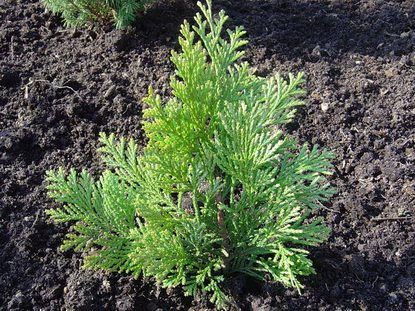
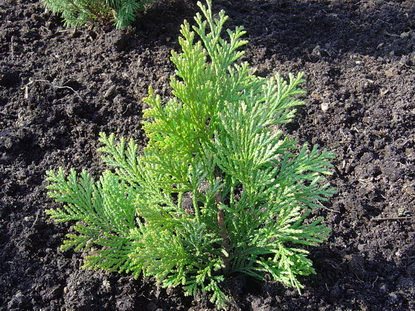
We follow certain transplant rules
It is best to plant bushes at intervals of a meter. The soil can be of any composition, the main condition is the availability of high-quality drainage. The juniper survives hot weather just fine, even without shade. But he loves moisture at the same time, do not forget to water abundantly. Transplanting bushes to another site requires some experience. As a rule, bushes grown in a nursery are sold together with an earthen ball. It is even wrapped in burlap for better preservation.
The Cossack juniper bush begins to prepare for the transplantation process in the spring. To do this, a bayonet shovel is cut through the soil around the required bush. In this case, the distance from the stem should be about forty centimeters. This will create conditions for the formation of new young roots in the outlined space. A juniper plant prepared in this way can be moved to a new place in the fall, or you can wait for this next spring.
Planting seedlings in autumn
They are grown from seeds in separate pots. Growth should be continued until there is confidence in their independence. Transplanting into open ground should be carried out with the onset of warm summer days.
For planting cuttings, material is selected at least five centimeters in length. It should be kept in a cool place and planted in the fall. It is best to prepare cuttings from the tip of the shoots. Try to choose straight sections of the shoots. For creeping bushes, cuttings are prepared from lateral processes.

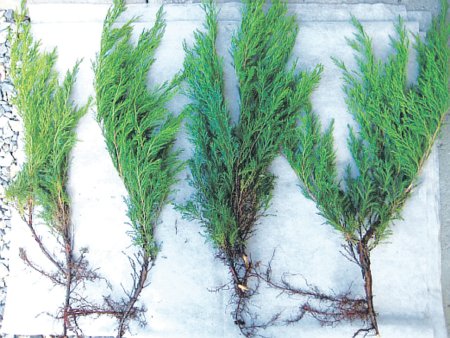
It should be noted that cuttings are not able to remain for a long period without the required amount of water. And if you need to move them to another place, use a plastic bag moistened with water. It is very important that a “heel” in the form of a piece of old bark remains on the grafting material. Without this, rooting of the cutting will not occur, no matter how hard you try.
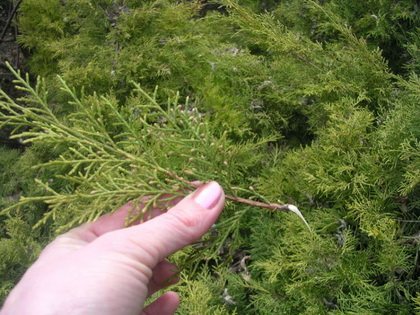

Juniper care after transplant
Juniper transplant and subsequent care are not difficult. The main condition is to water abundantly in dry weather, spray the crowns, create protection from direct sunlight on the plant. Young plants need to be supported with nutrients during the growth period, and shelter should be organized for them before the winter season.
The soil should be acidic enough, you can add lime or dolomite flour to it before planting. Remember that the juniper does not like a lot of fertilizers, so you can limit yourself to forty grams of nitroammophoska for each square meter of the site. After watering or removing weeds, it is recommended to loosen the soil to a shallow depth and sprinkle it with mulch in the form of sawdust, chips or peat about five centimeters.
The transplanted plants can then be pruned to give the shrubs the desired shape. But at the same time, it is necessary to remove only damaged branches so as not to destroy the entire plant. This is best done no more than twice a year. It is best to determine the time for pruning in spring and autumn, when the temperature regime is at least four to five degrees Celsius.
After following all the tips, you can decorate the site with juniper bushes without difficulty.
